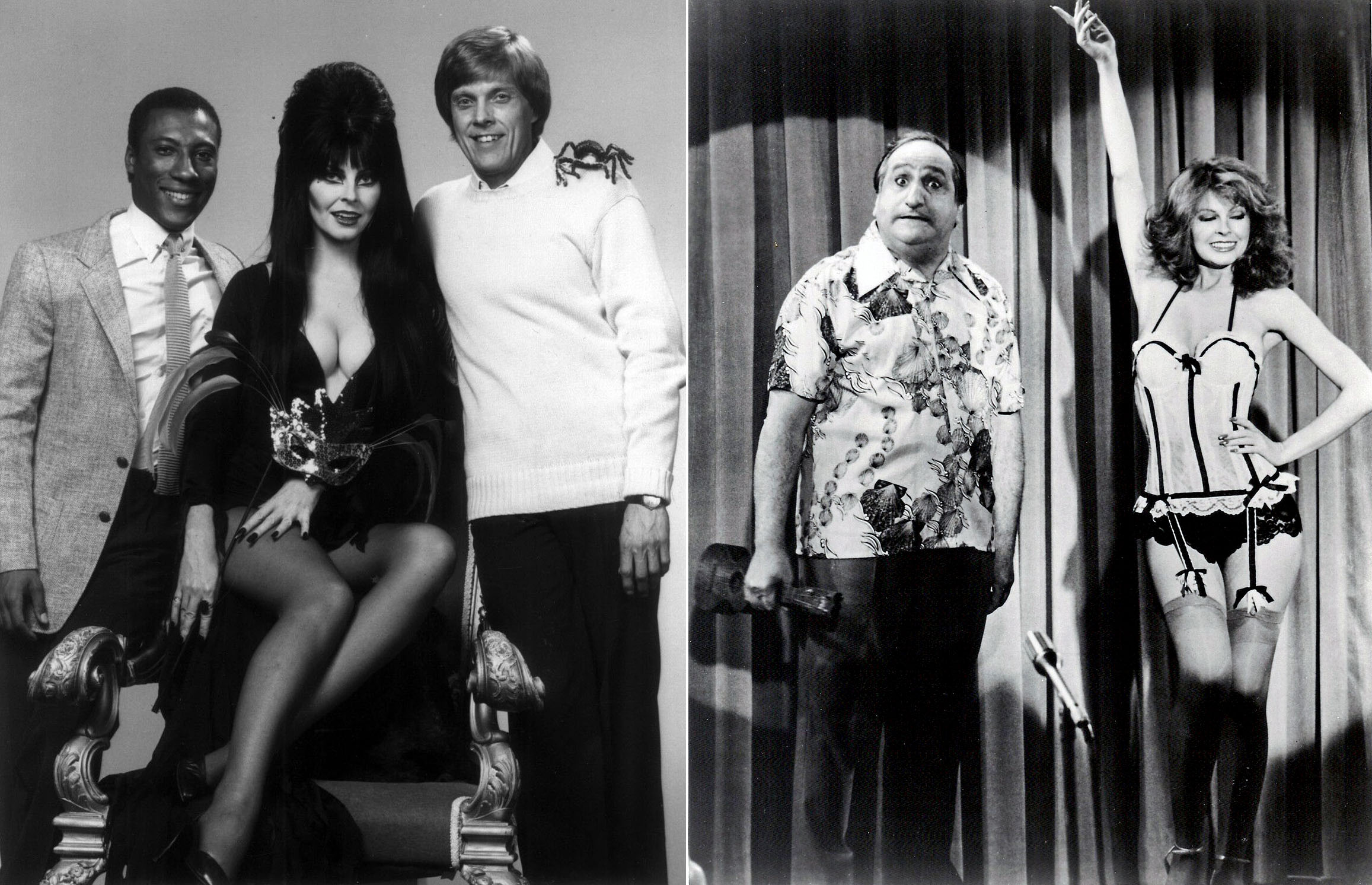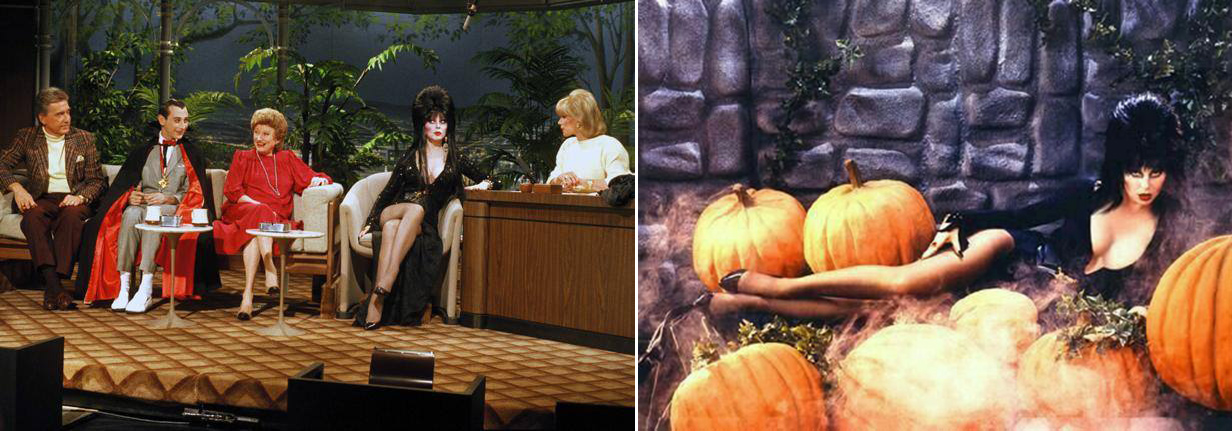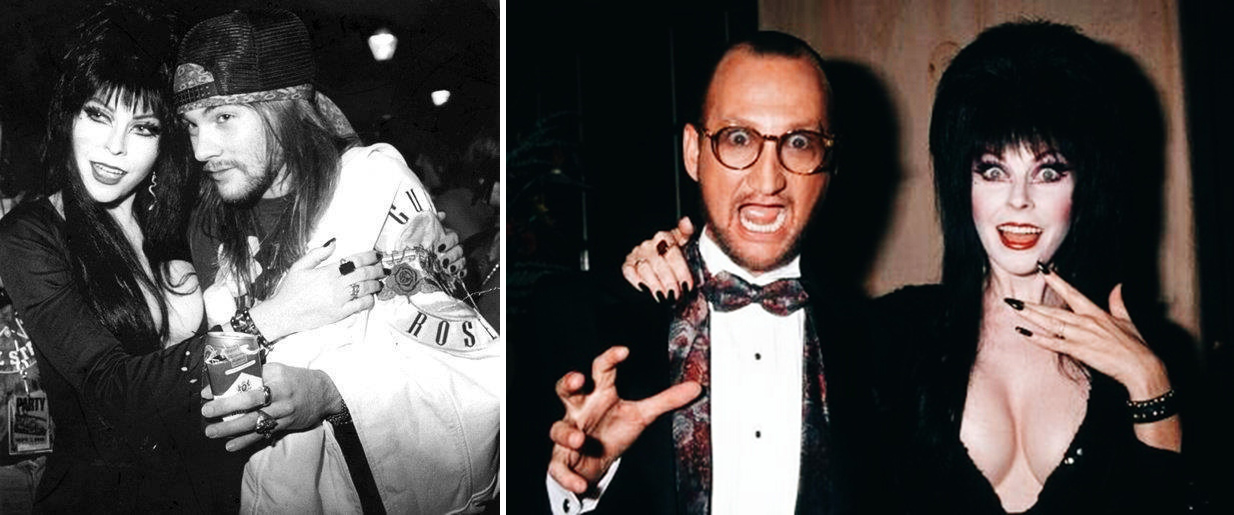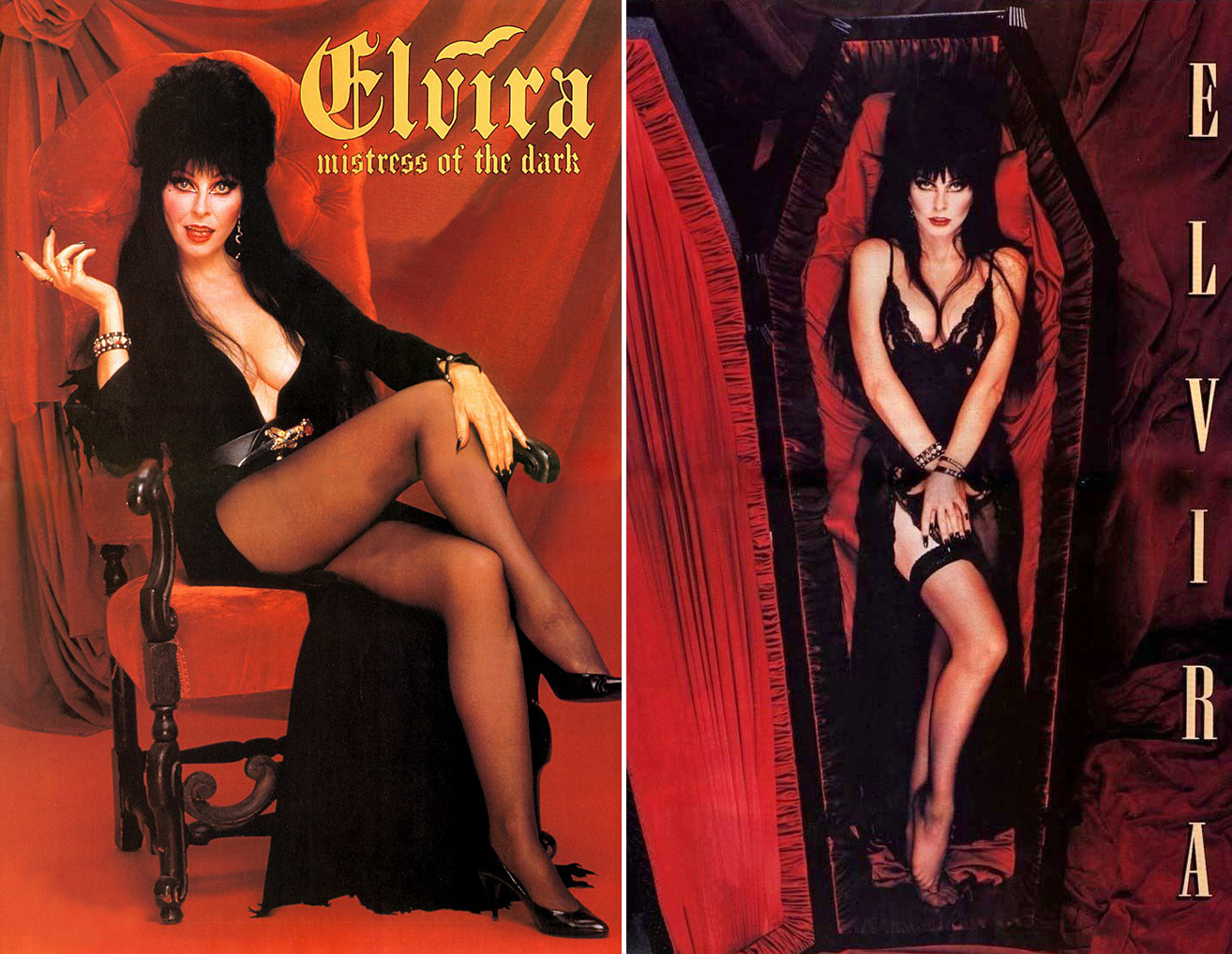
In 1981, Cassandra Peterson was working at a typewriter for a low wage secretarial job when her agent found her a gig as local TV horror host. She developed a sexy Goth look with a Valley Girl affectation – and Elvira, Mistress of the Dark was born.
Initially, she wasn’t pulling in enough money to quit her day job as a secretary. And when mobs of adoring (and salivating) male fans frequently flooded her place of work, Peterson’s boss encouraged her to quit, forcing her to concentrate on Elvira full time.
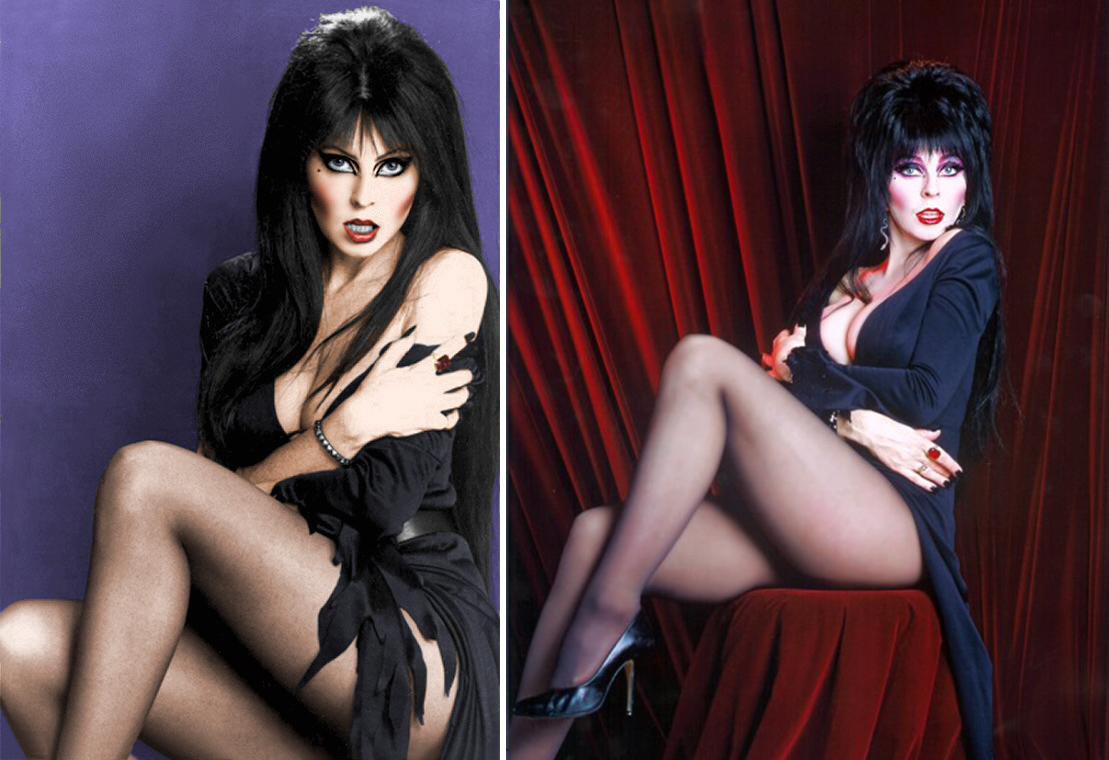
Once the Elvira character took off, Peterson quickly demonstrated her business acumen. She owns her Elvira character 100 percent: so, all calendars, pinball machines, films, books, etc. goes straight into her bank account. In much the same way as Gene Simmons and Paul Stanley milked the KISS brand for all it was worth, Cassandra Peterson has turned Elvira into a highly profitable industry spanning three decades.
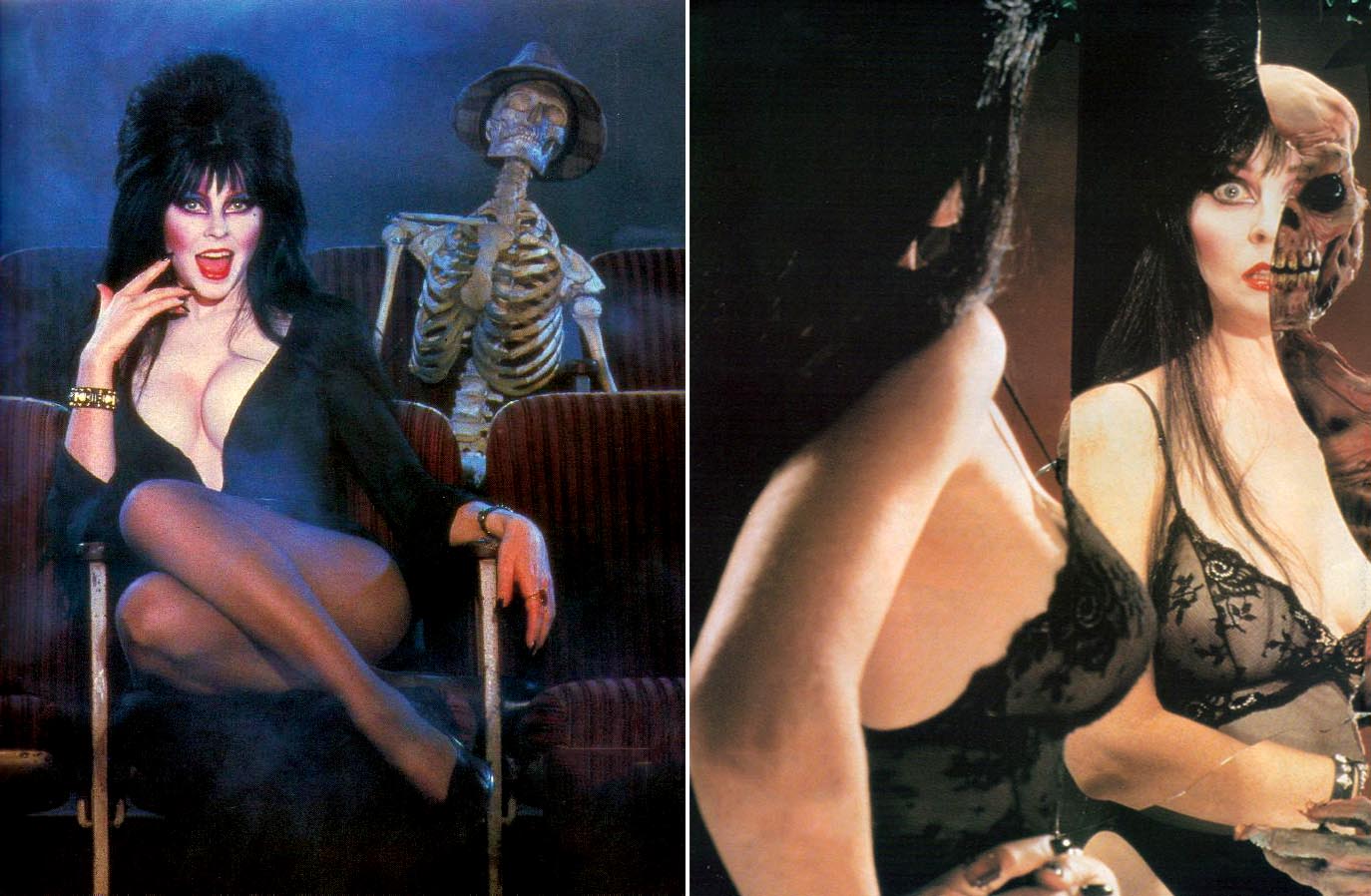
Part of Elvira’s charm is she’s not all sex – she’s also genuinely funny. Cassandra Peterson actually gained experience (prior to Elvira) with The Groundlings, the famous Los Angeles improvisational group.
“I was working with people like Paul Reubens (Pee Wee Herman), Phil Hartman and John Lovitz” (Femme Fatales Vol. 7, No. 7, Dec. 1998)
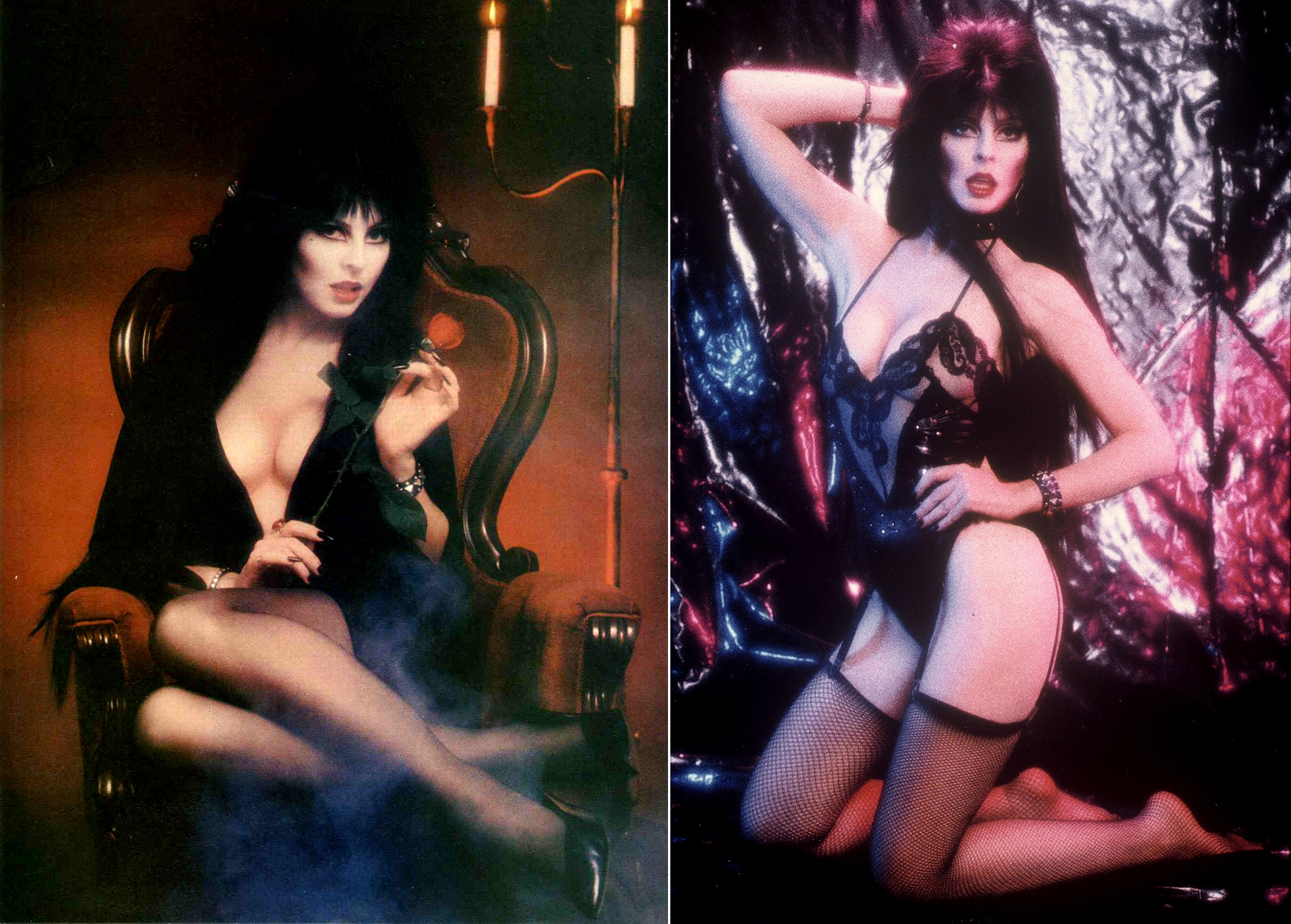
In fact, it was her comedy experience that got her the Elvira role in the first place. The director had spotted her doing comedy with The Groundlings, and this gave her an edge over the other girls who auditioned.
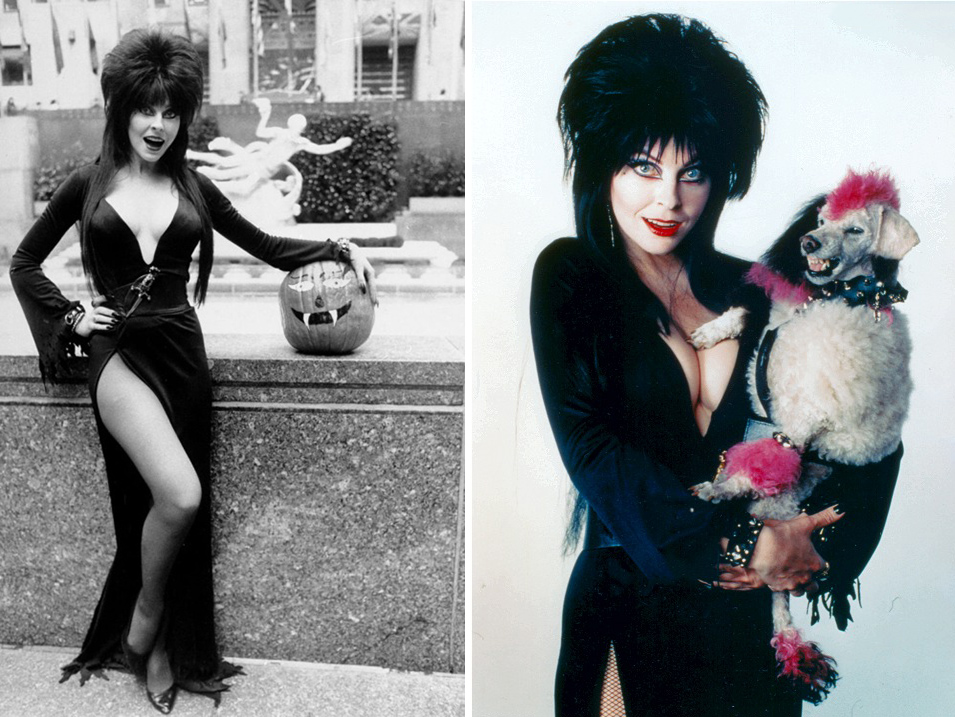
But let’s pause for a moment and rewind to the beginning, long before she donned the big black wig and cleavage enhancing gown on Los Angeles TV. Cassandra Peterson was born in Manhattan, Kansas in 1951.
When Cassandra was three years old, she was severely burned by a kettle of boiling water for making Easter eggs. Scalding 35 percent of her body with third degree burns, it left permanent scars on her neck and shoulders. Cassandra said kids in school were cruel towards her disfigurement and made fun of her.
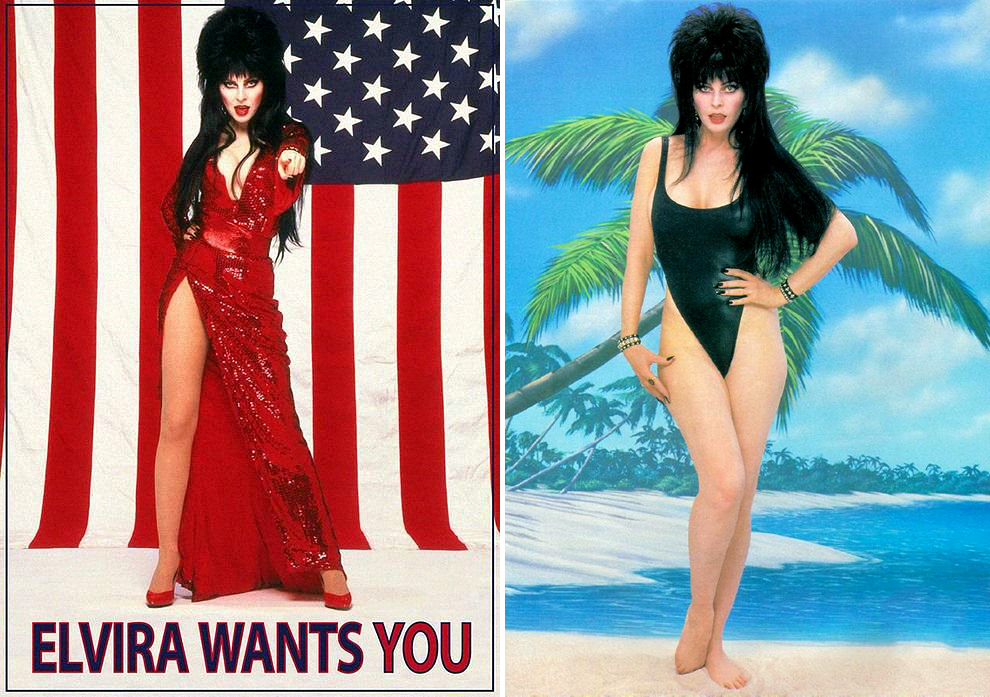
It was this cruelty that led her to look into drama classes and theater as an escape. Perhaps, if not for this tragic incident, she would have never pursued a career in the entertainment industry.
In 1962, her town and several others were intentionally flooded by the government to create the Tuttle Creek Dam and Reservoir. So, her family relocated to Colorado Springs, Colorado. In 1966 she began school at General William J. Palmer High School…. and go-go dancing at night!
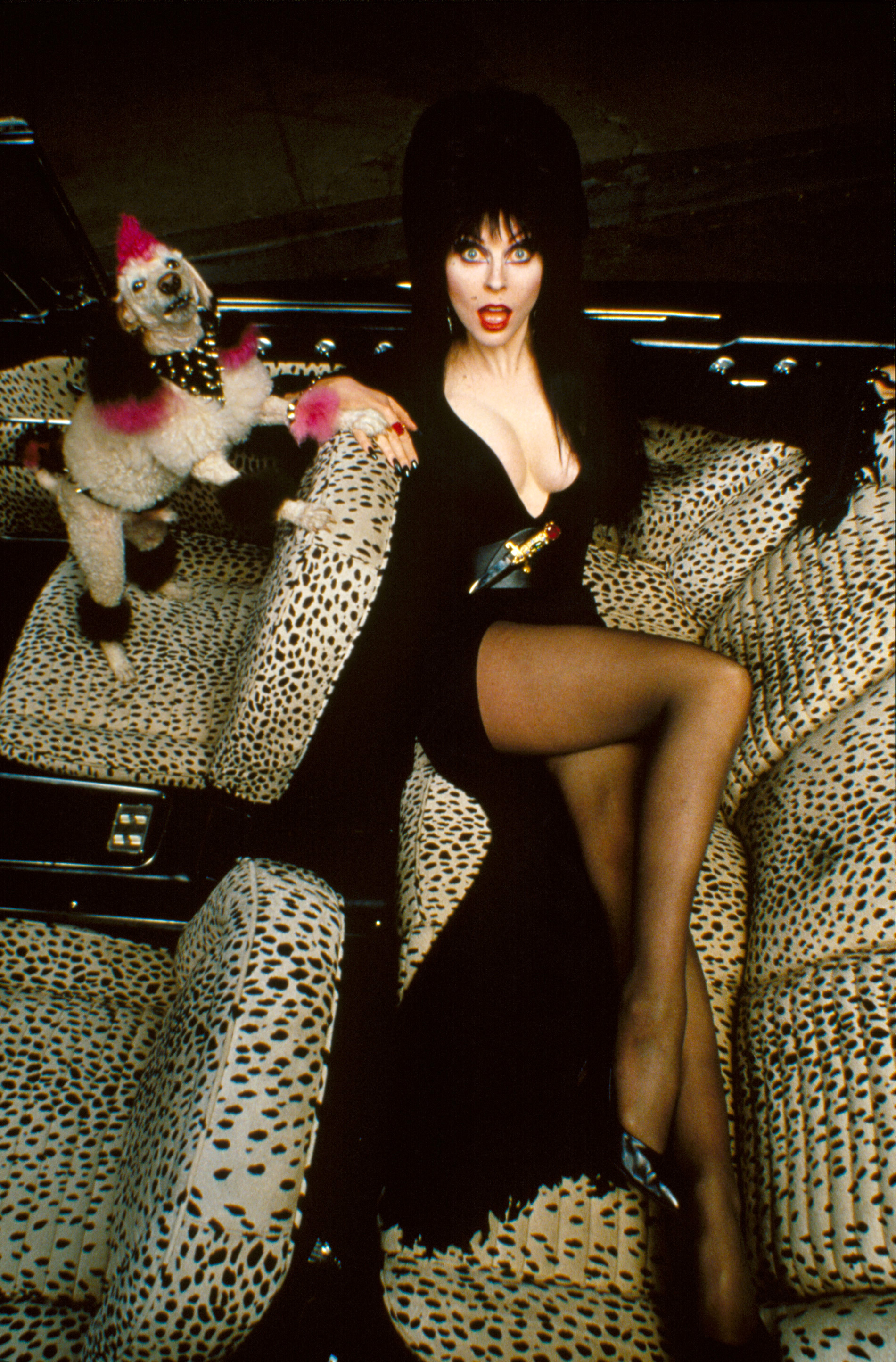
Yes, before finishing high-school at the ripe old age of 14, she worked as a go-go dancer in a Colorado nightclub called Club A Go-Go. She went by the pseudonym “Suzanne Summers”. It wasn’t a nude gig; just white boots and a bikini.
“So, while some kids worked at how to play the piano, I was busy learning to twirl tassels.” (Femme Fatales Vol. 7, No. 7, Dec. 1998)
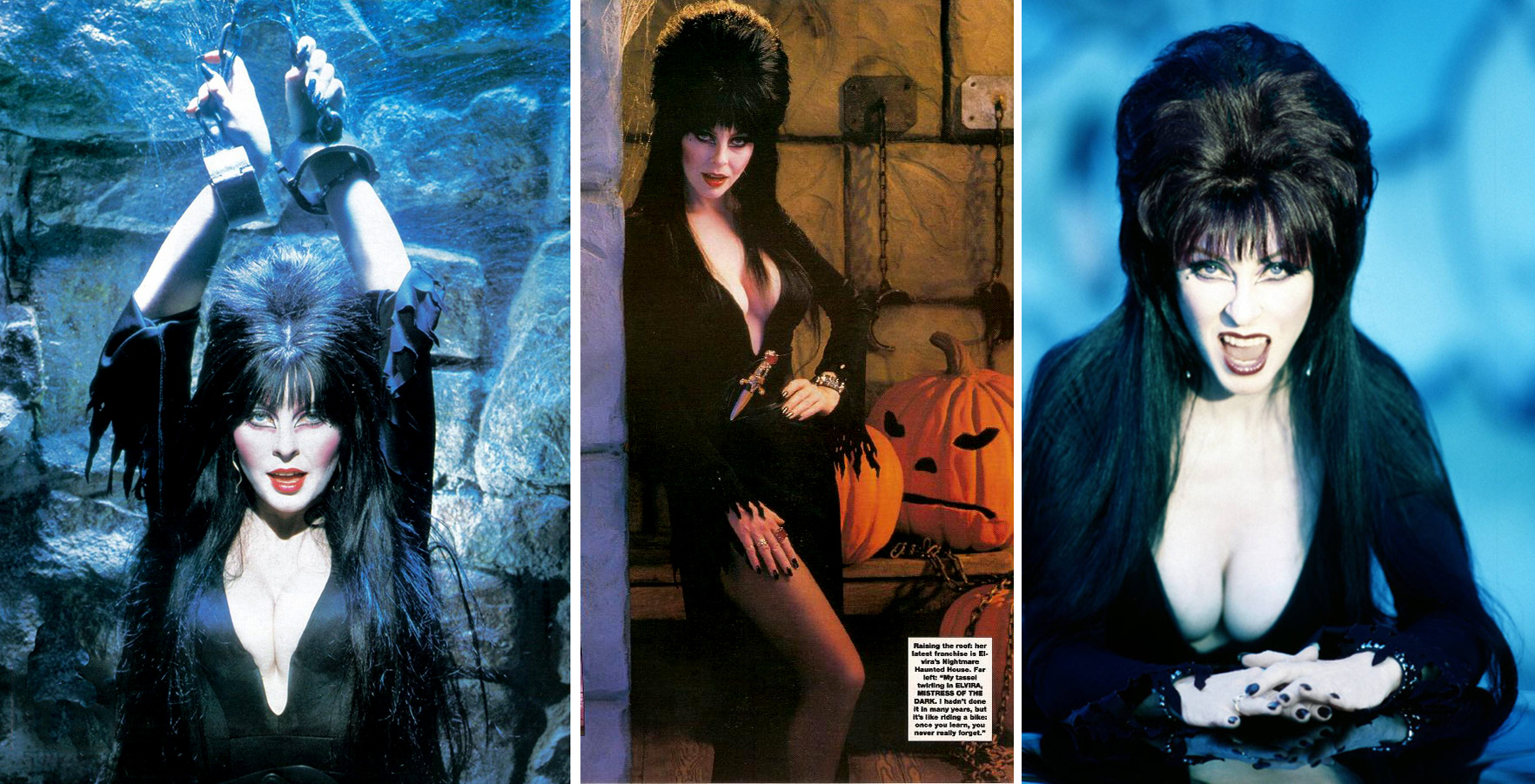
Just days after graduating, Peterson got a job as a Vegas showgirl, then got a minor role in the Bond film Diamonds Are Forever (1971).
She was barely in the film – just two quick scenes, one in Vegas where she was still performing as a showgirl, and a brief scene in London where she got to hang with Sean Connery, Michael Caine and Tony Curtis.
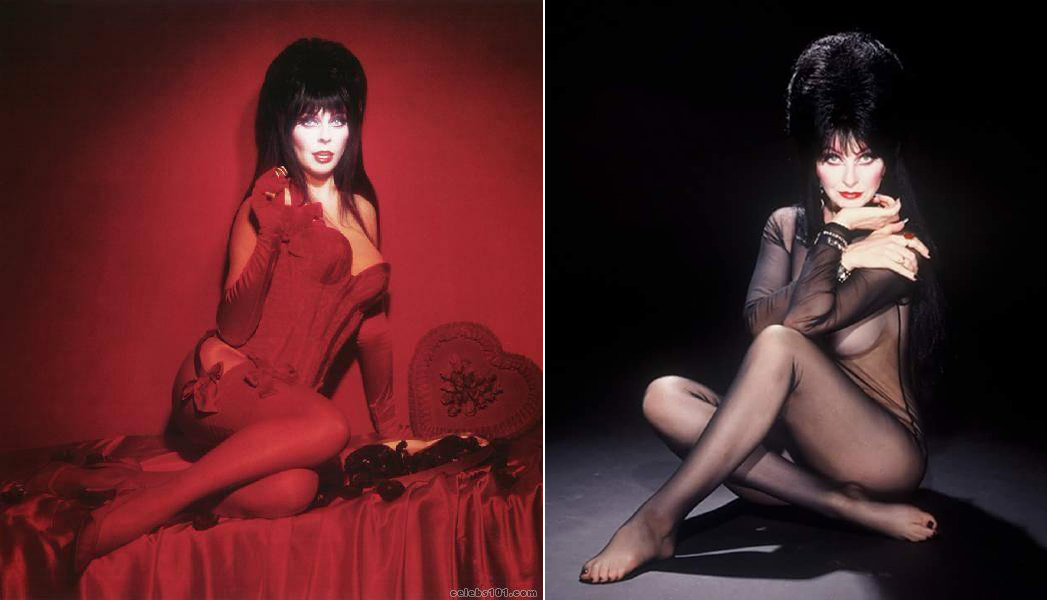
As a Vegas showgirl, Peterson often performed with Elvis Presley – and even had a romantic encounter with The King. How did this meeting come about? Peterson’s friend was dating Elvis’ money manager, and so got invited to a private party, where Elvis instantly gravitated to Peterson. According to her it was because she was 17 and all the other girls there were in their thirties.
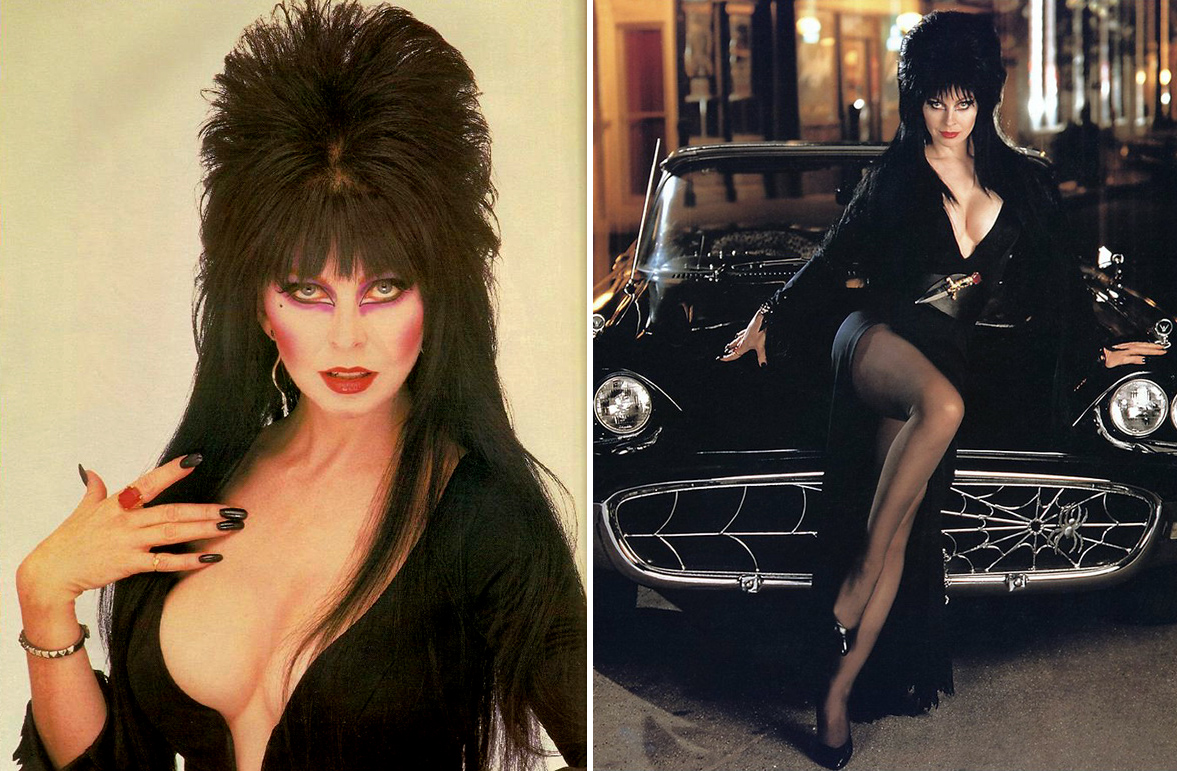
According to Cassandra, Elvis was “just so down to earth and nice, and a real gentleman.” She feels he wasn’t the druggie everyone paints him to be; rather a kind human being misled to use prescription medication, which created an addiction that was impossible to overcome.
Also, during the Vegas years, Cassandra met up with another performer who wasn’t quite so gentlemanly. According to Peterson, she lost her virginity to Tom Jones – and he was, she alleges. such an aggressive lover, she had to get stitches!

Around this time, she appeared nude in several adult magazines: High Society, Debonair, Man’s Delight, Modern Man, Playboy and Oui, but never as a centerfold. Vegas showgirls were not allowed to be centerfolds, only features in the magazines. So her bare pictorials in these magazines never really garnered much attention.
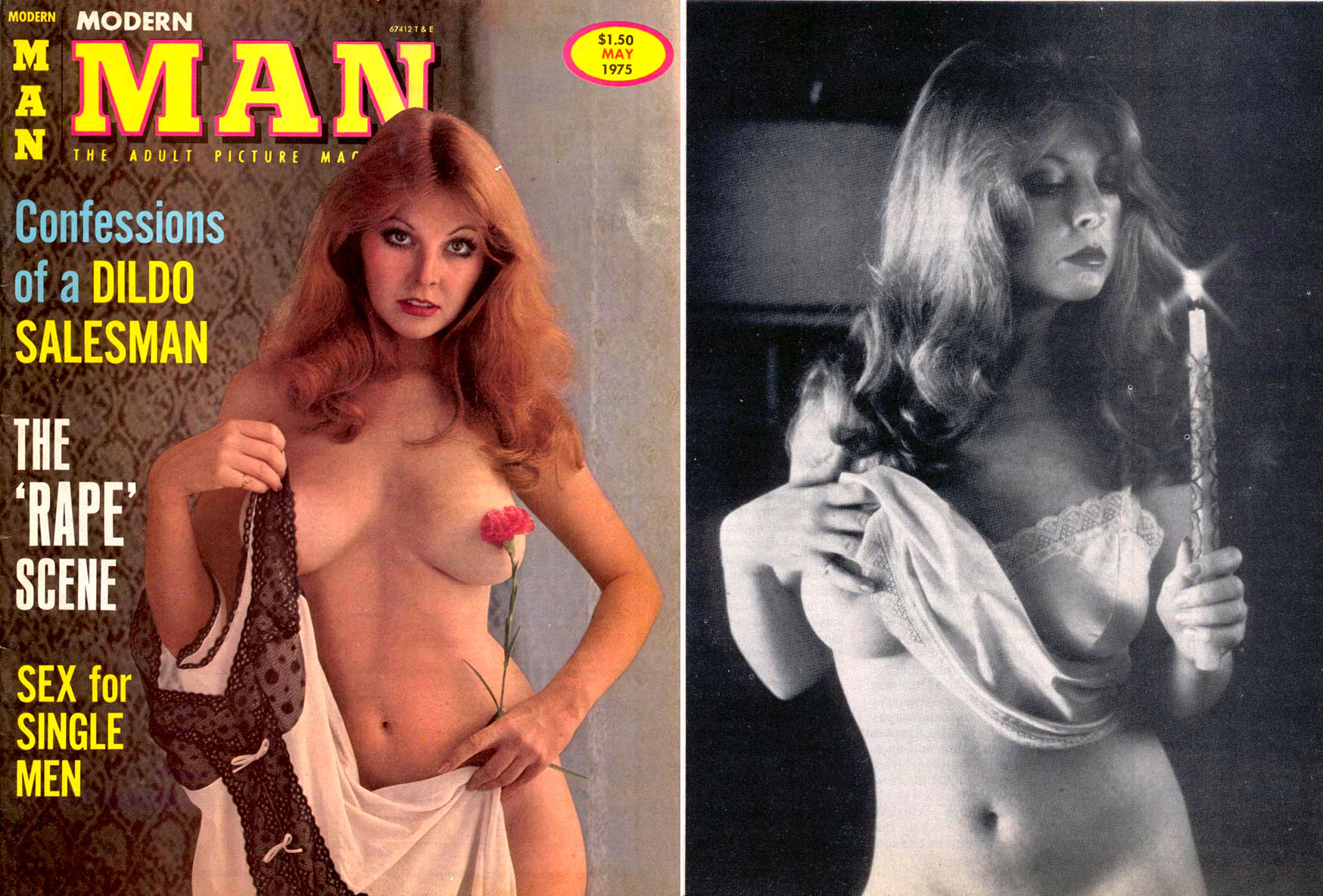
Cassandra Peterson in Modern Man and Debonair magazines
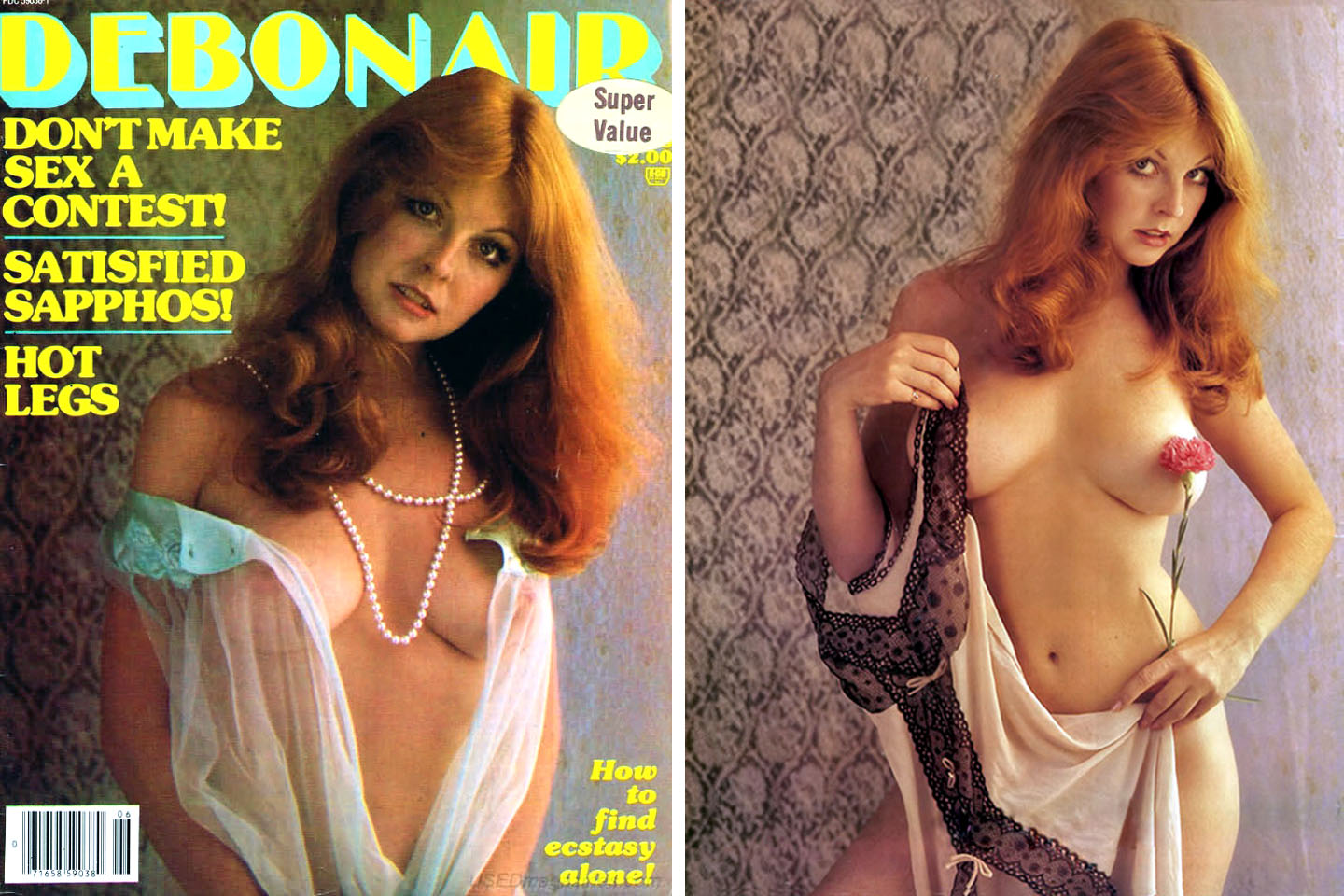
Peterson said in a 2014 interview that it was advice from Elvis that motivated her to leave Vegas and travel overseas. So, in 1972, Peterson and a fellow Vegas showgirl traveled to Italy (she’d been when she was 16, and wanted to go back ever since). There, they met a crew member for Fellini’s film Roma (1972) and got a small part in the film.
Oddly enough, while in Italy, Peterson became the lead of an Italian rock band named Latins Ochanats and The Snails.
Also while in Rome, Peterson landed a small part in a movie about Salome, where she basically just crouched nude among gargoyles. Her feelings about being nude onscreen:
“It was easy for me to do nude scenes all the time because I had been a showgirl for a while, and all you wear is G-string. Basically, that’s what I wore in movies. Topless was no problem for me.”
After Rome, Peterson moved to New York. There, it was a grueling life with little reward. She worked two menial jobs and would audition for Off-Broadway parts in the evening. She didn’t last long in the Big Apple, and packed her bags for the west coast.
Finally, in 1973 Peterson landed her first substantive role in Working Girls (1973) where she performs a striptease. Leonard Maltin called it “one of the better drive-in comedies” of the year. She also had some bit parts in Cheech and Chong’s Next Movie and The Sting II.
In 1976, she appeared on the cover of Tom Wait’s album Small Change; however, whether that is really Cassandra is still up for debate. Peterson has no memory of posing for the cover.
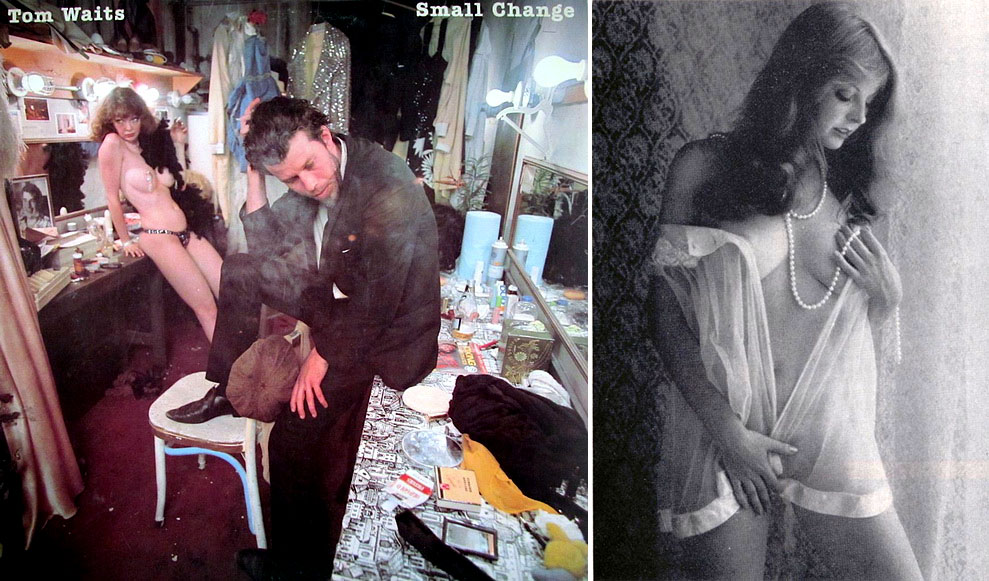
Opportunity Lost: In 1980, Peterson was nearly cast as Ginger Grant in a revival of Gilligan’s Island. At this point, she basically was ready to throw in the towel. Abandoning acting, she made steps towards a career in advertising in the late seventies, and worked as a secretary. However, she kept her agent, in the faint hope that her big break may still come through.
Cassandra had a few other TV opportunities, but nothing of substance. She briefly appeared on Happy Days, Flying High, and Fantasy Island (and can be seen for a brief second on the opening to Westworld as a barmaid).
The big break that everyone knows her for, the role as Elvira, Mistress of the Dark, didn’t come until 1981 when she was working as a secretary.
So, how did she come up with the name “Elvira”? They initially were going to go with “Vampira”, but decided that was too generic. So, the entire cast and crew of the show – the sound and lighting guys, and whoever happened to be at the station at the time – threw in names into a coffee can. Someone drew a name written on a scrap of paper – “Elvira”. To this day, Peterson doesn’t know who put that name into the coffee can. Likely, it was inspired by the Oak Ridge Boys song “Elvira” which was popular at the time. Cassandra Peterson hated the name at first, but it grew on her.
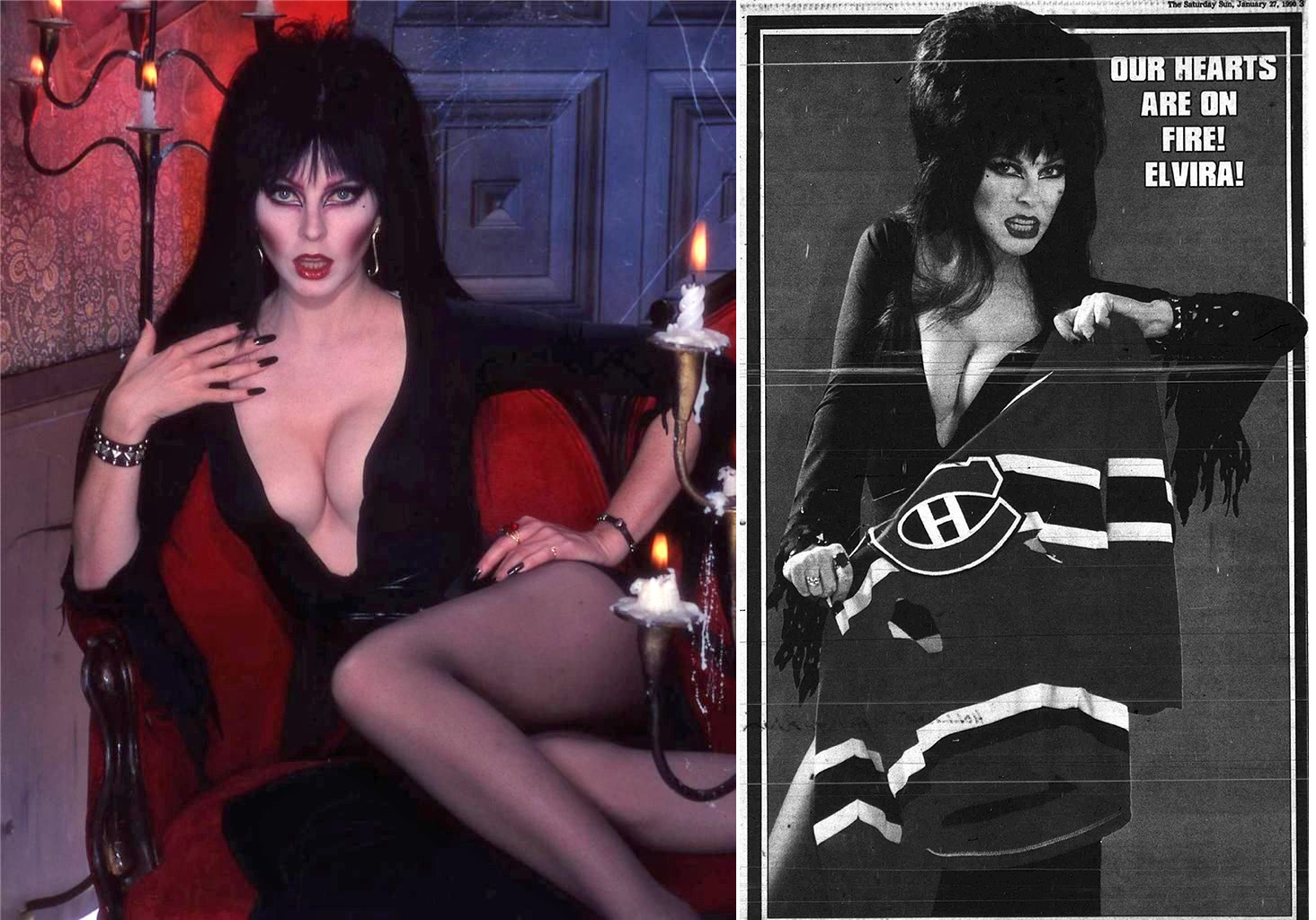
At right – a reference to the Oak Ridge Boys hit
In 1981, when Elvira’s show premiered, she was by no means unique. It seemed like every town had its own horror host. Most hosts were men, and usually affiliated with a local business, like a car dealership or mattress warehouse. Cassandra Peterson’s exposure to horror hosts came from her time in New York watching Chiller Theater (featuring hosts The Count and Igor) on WPIX. Peterson no doubt drew some inspiration from these memories.
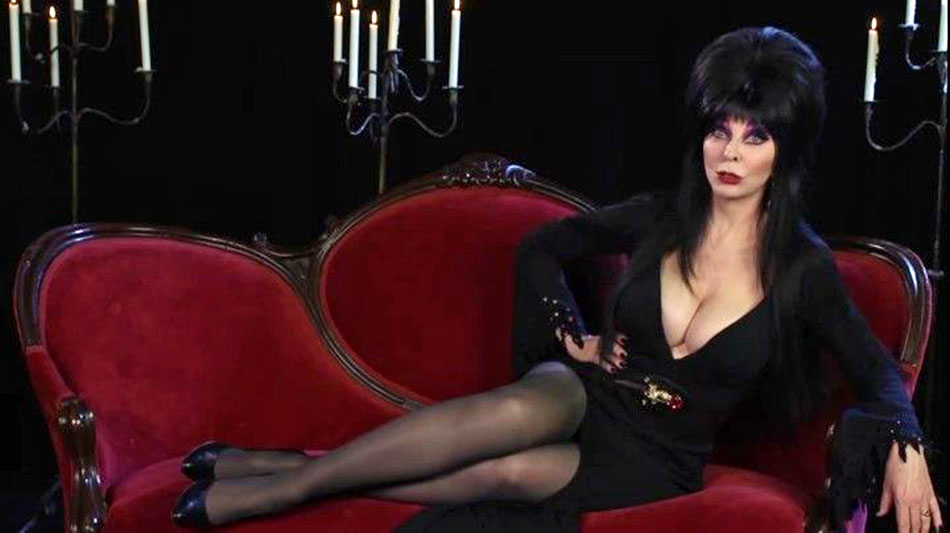
Elvira, on her usual couch, on Movie Macabre
Elvira replaced the previous Los Angeles KHJ-TV horror host, “Seymour” who had passed away. As mentioned before, the director had spotted her performing with The Groundlings. The concept: A voluptuous vampire that talks like a Valley Girl.
Elvira’s Movie Macabre was an instant success on Los Angeles’ KHJ-TV. Within only eight months, her success was undeniable: the show promoted a 3-D presentation (The Mad Magician) which required purchase of 3-D glasses and 2.7 million were sold! Not long after, Elvira was already making an appearance on The Tonight Show.
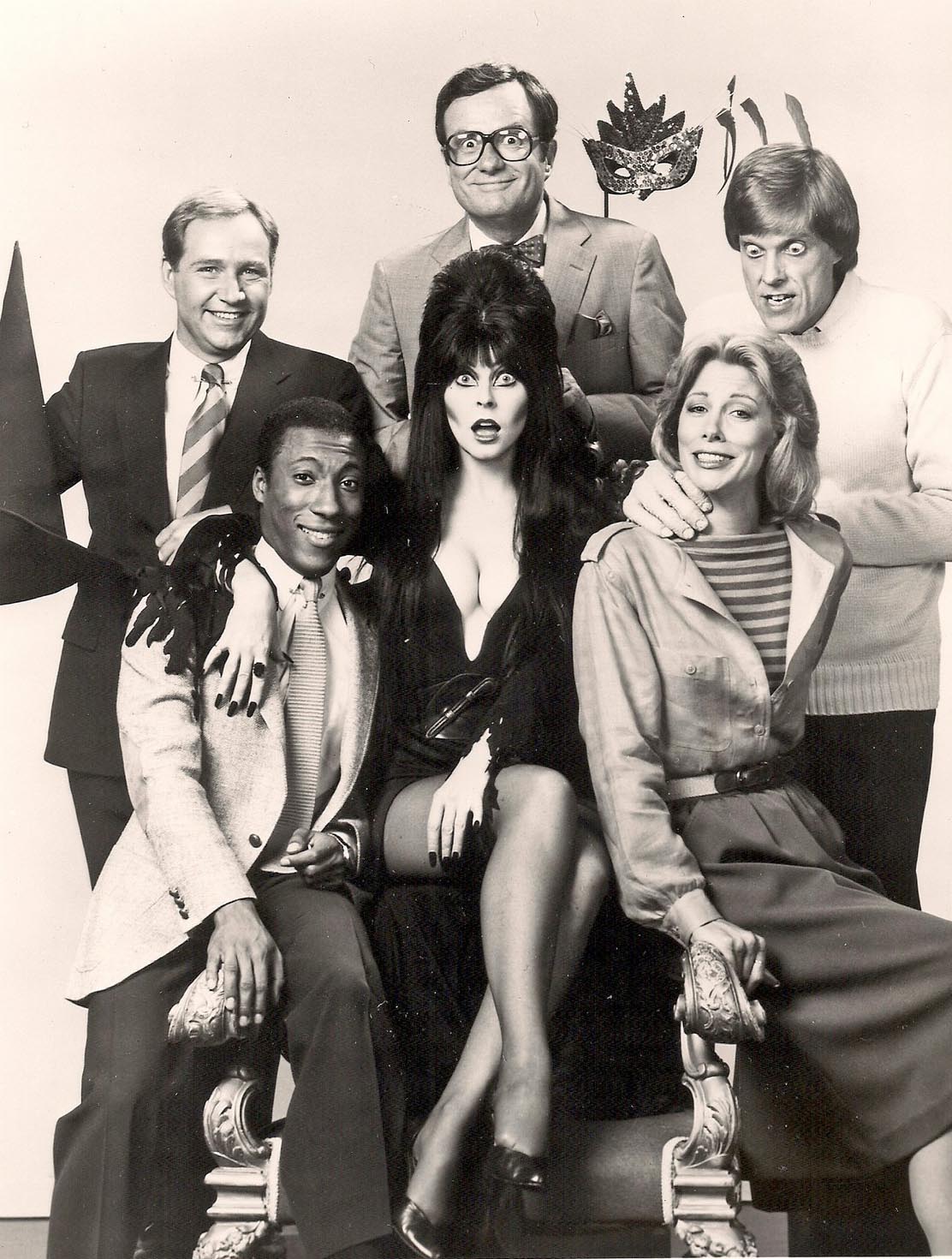
Elvira guest appearance on Real People
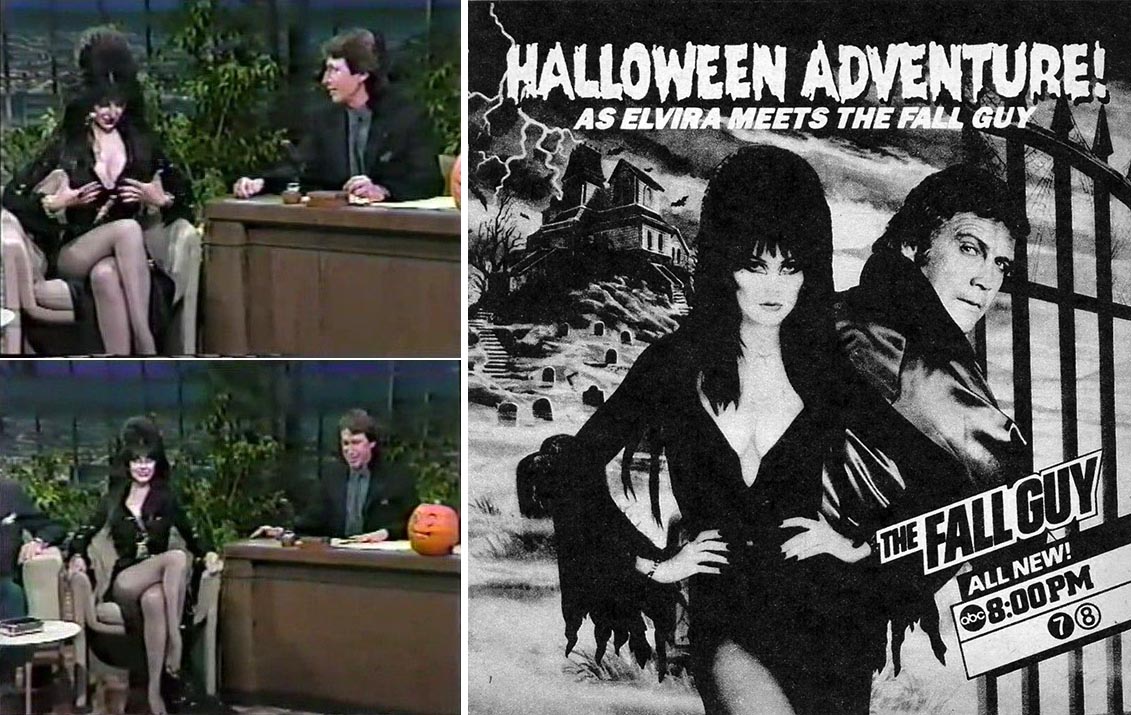
Elvira on The Tonight Show (with guest host David Brenner) and The Fall Guy
Of course, her popularity wasn’t entirely due to her comic timing and winning personality. Let’s face it, her cleavage had a lot to do with it. When questioned about what kind of message she is sending to little girls regarding her vampy poses and cleavage, her is her response:
“I actually think it’s a good message. I think women don’t have to be covered up, because we don’t live in the Middle East, you know, and wear veils and everything. And a woman’s cleavage is perfectly normal and natural and I’ve never thought of it in a bad way, like a non-feminist way. I always think of it as women should be able to show whatever they feel like showing, whenever they want to.”
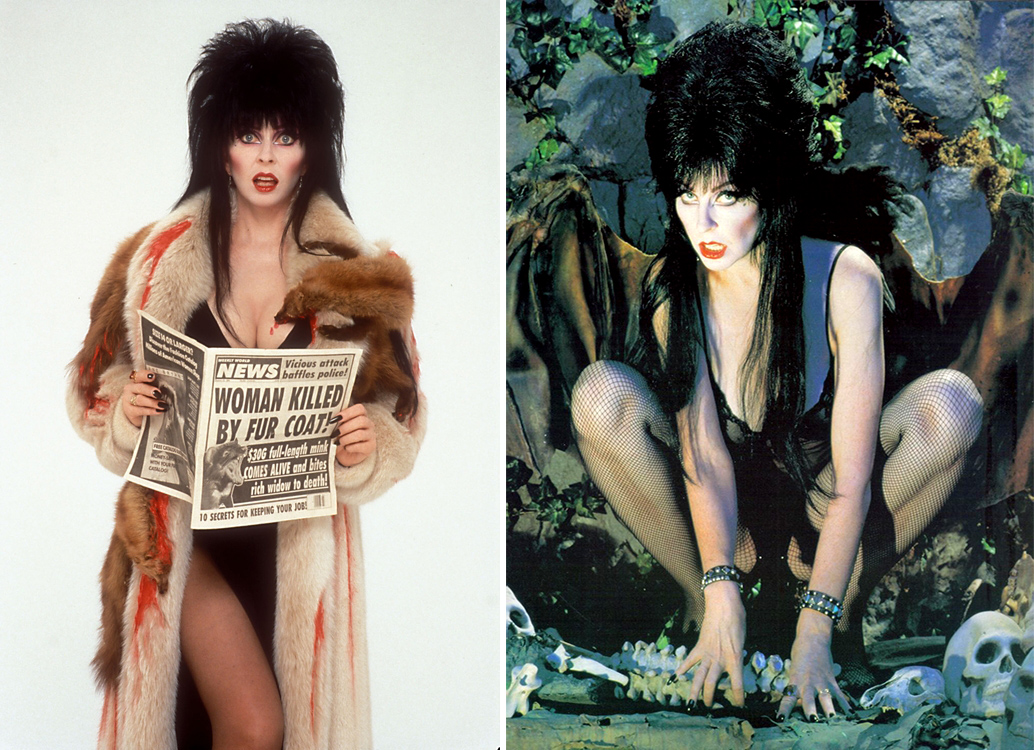
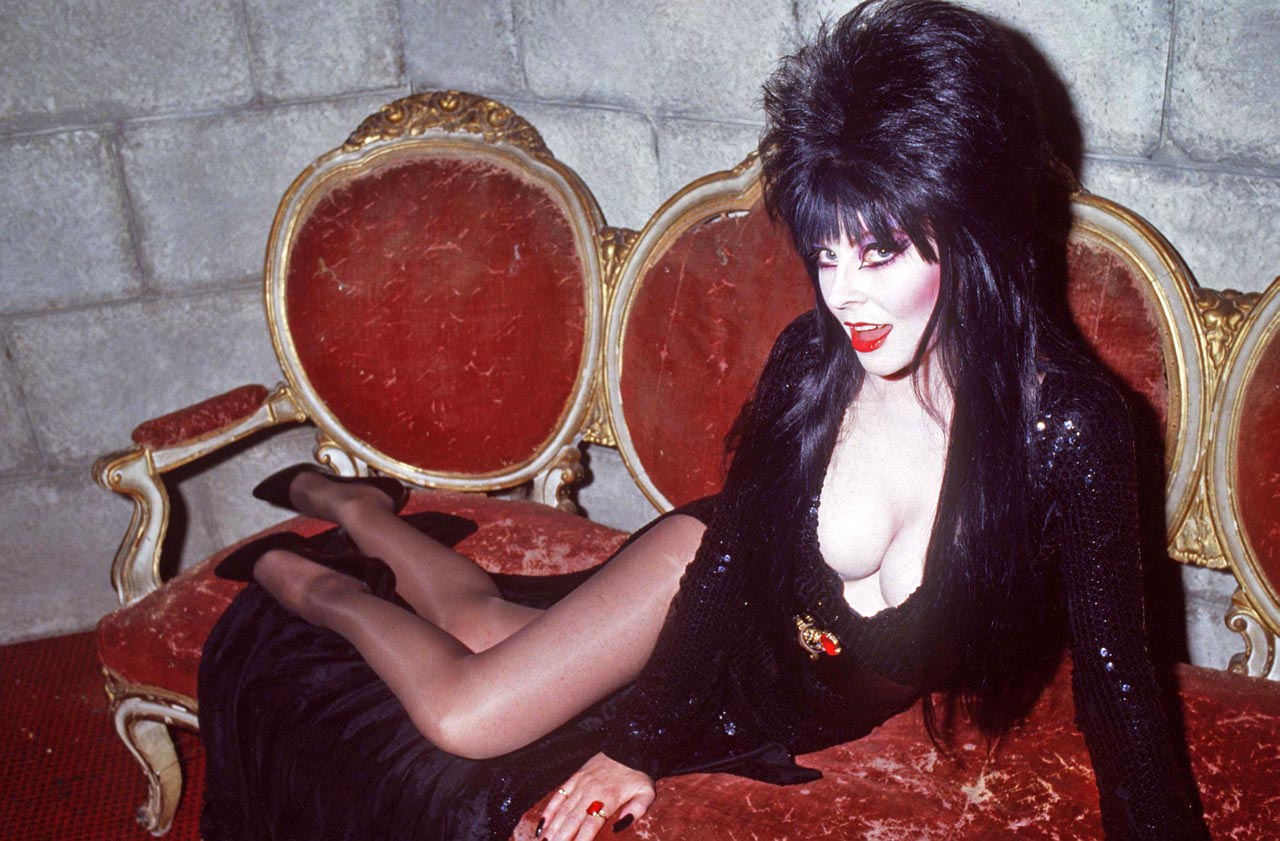
The Elvira Merchandising Machine
Elvira took a small time local TV host gig, and made it into a multi-million dollar industry, with countless products and merchandising. Cassandra Peterson demonstrated that she was a shrewd businesswoman, and genius entrepreneur. Wisely, Peterson refused pay increases on Movie Macabre, and chose property rights instead.

Elvira’s Accolade video game, and her casino game
In 1987, As the new “spooksperson” for Coors Beer, Elvira became the first female celebrity ever to endorse a beer product. Unfortunately, Coors received a lot of flack from the religious right, and had to tame the advertising, and not make the most of Elvira’s best assets.
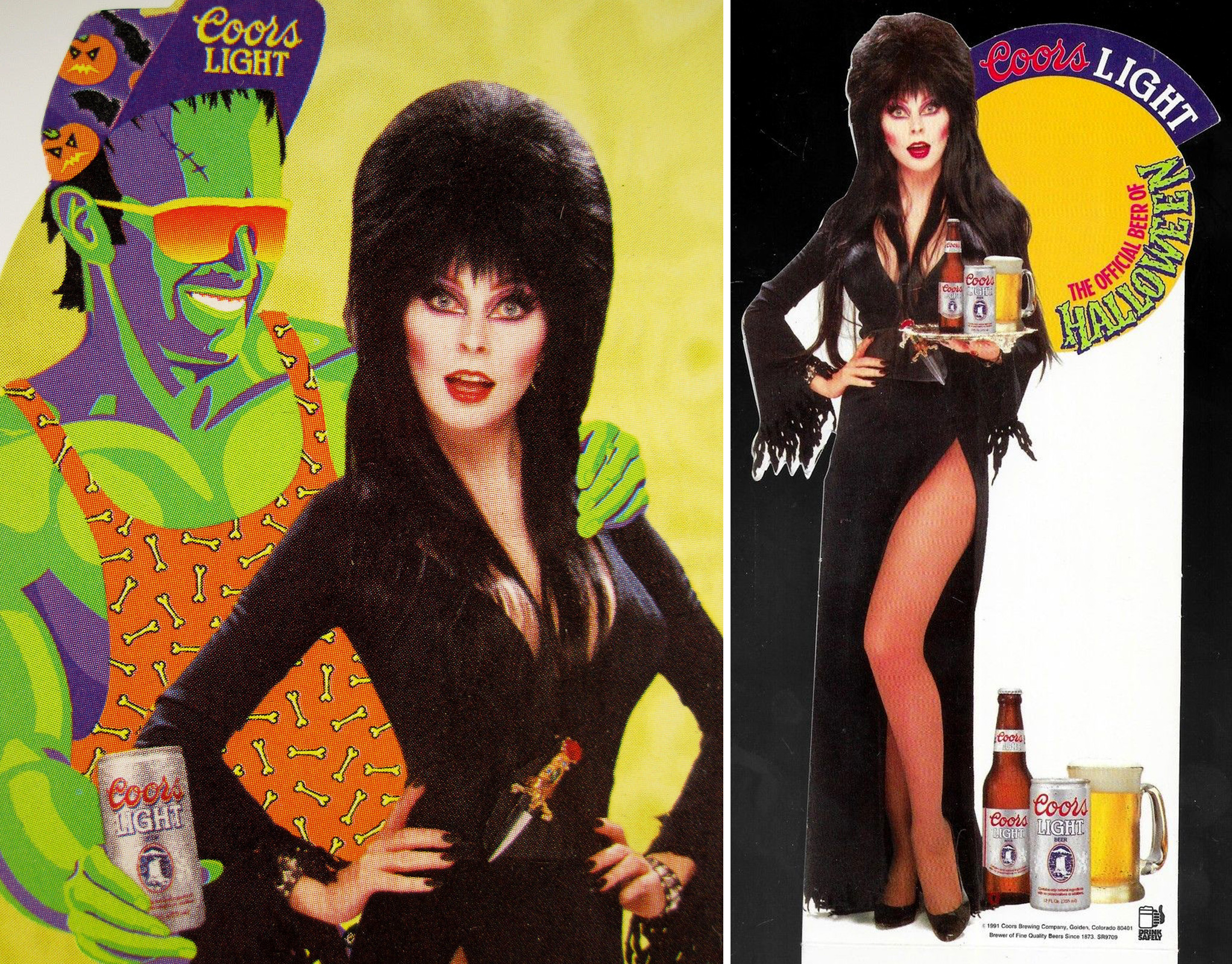
Elvira spookswoman for Coors
After advertising for Coors, Elvira got her own beer label: Elvira’s Night Brew from a microbrewery in Minneapolis. But her patented suds didn’t last long as the parent company went out of business.
In 1988, Elvira made her first appearance on the big screen in Elvira, Mistress of the Dark. The film wasn’t much of a Summer hit, but did well on VHS (reaching #12 on Billboard’s video rental charts). A sequel (Elvira’s Haunted Hills) wasn’t released for another nine years.
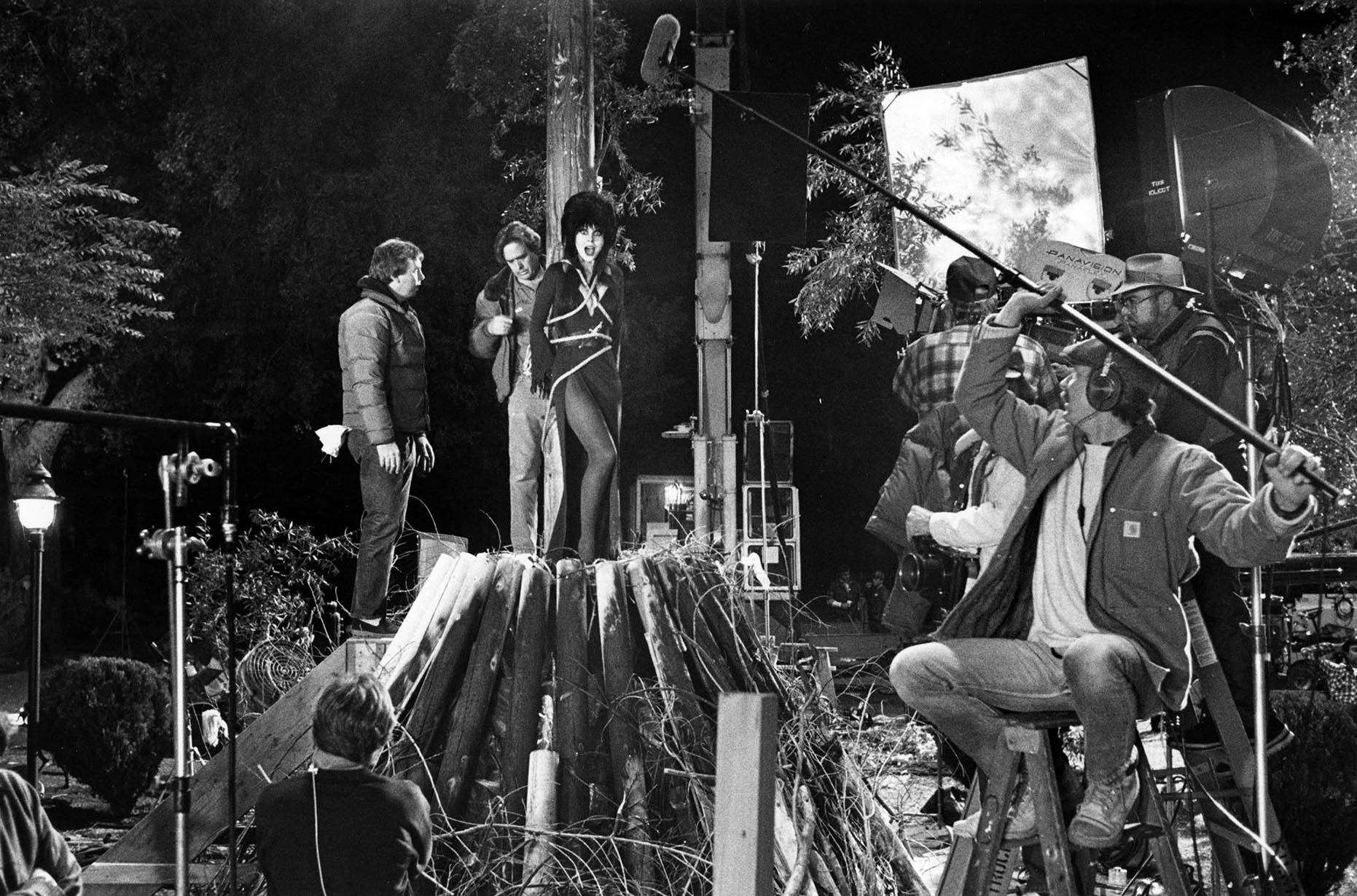
Cassandra Peterson as Elvira tied to stake in scene from her movie “Evira: Mistress of the Dark.” This photo was published in the March 20, 1988 Los Angeles Times.
Elvira books: Cassandra Peterson struck a deal with Berkley Publishing, and released a series of horror novels. The books were a blend of comedy and horror. For instance, Transylvania 90210 is a tale about a group of vampires that move next door to Elvira. The books were actually written by Peterson herself (and co-author John Paragon).
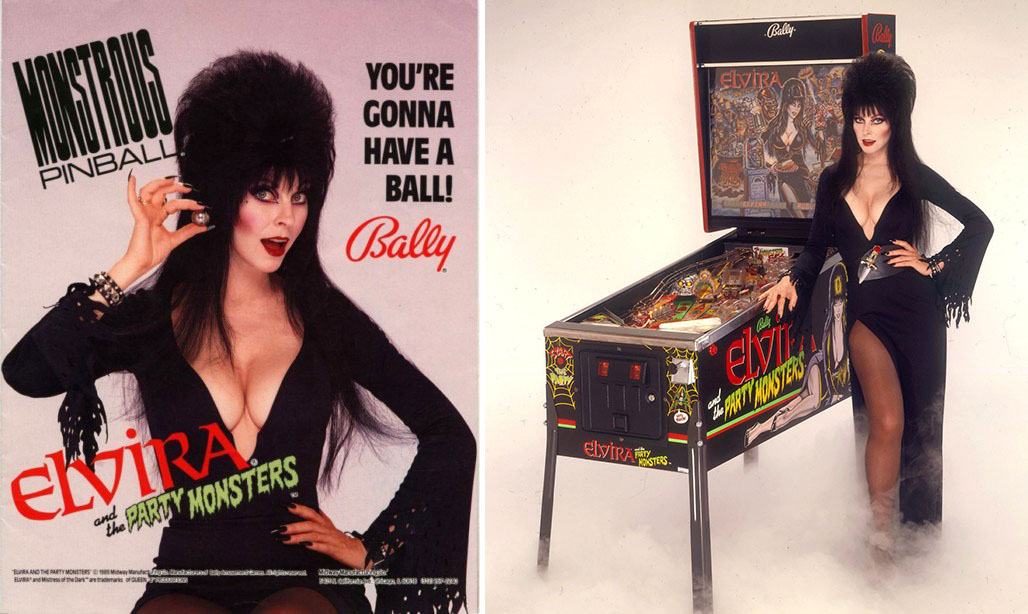
Elvira’s Pinball Machines
In the late 1980s, Peterson landed a deal with CBS for a new TV show titled Elvira. Unfortunately, the network’s corporate brass branded the show “too sexy” for prime time, and it was shelved.
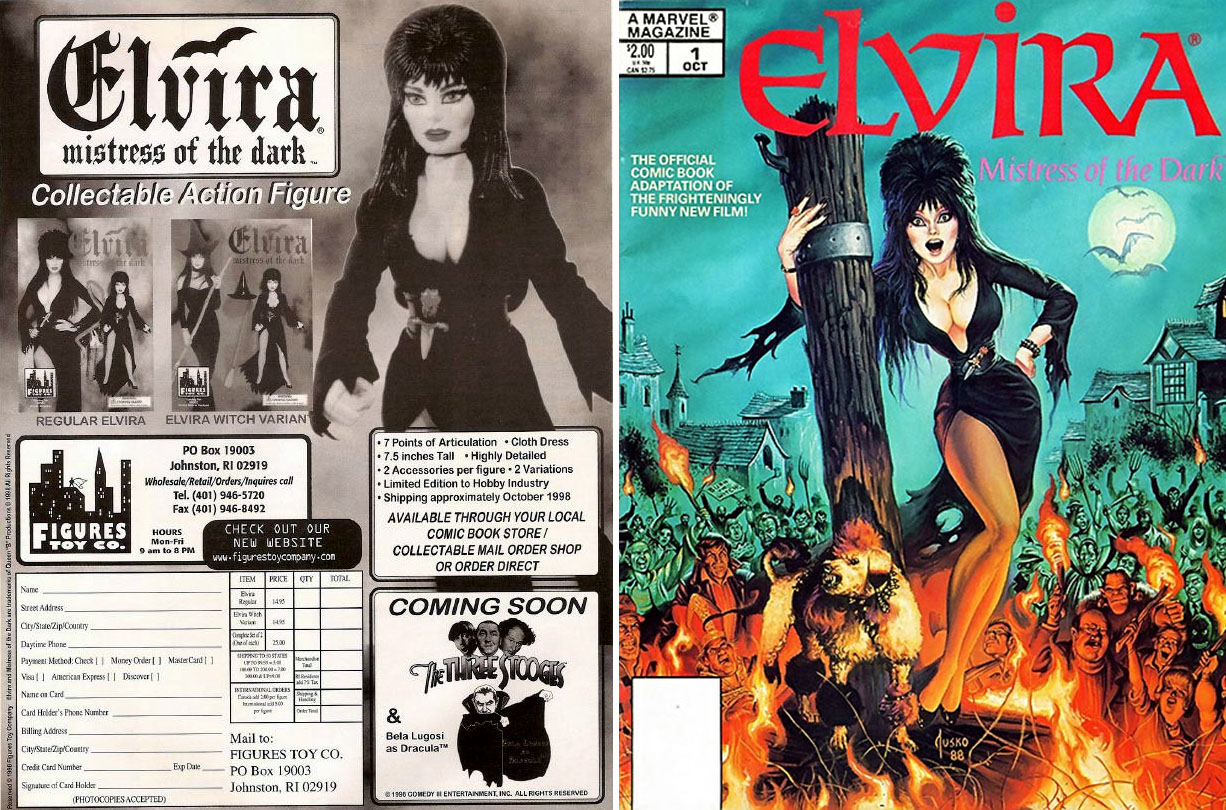
Also around this time, Peterson was sued by Maila Nurmi, the 1950s horror host known as “Vampira”. She claimed the Elvira character was plagiarized from her Vampira character, but the case was thrown out of court.
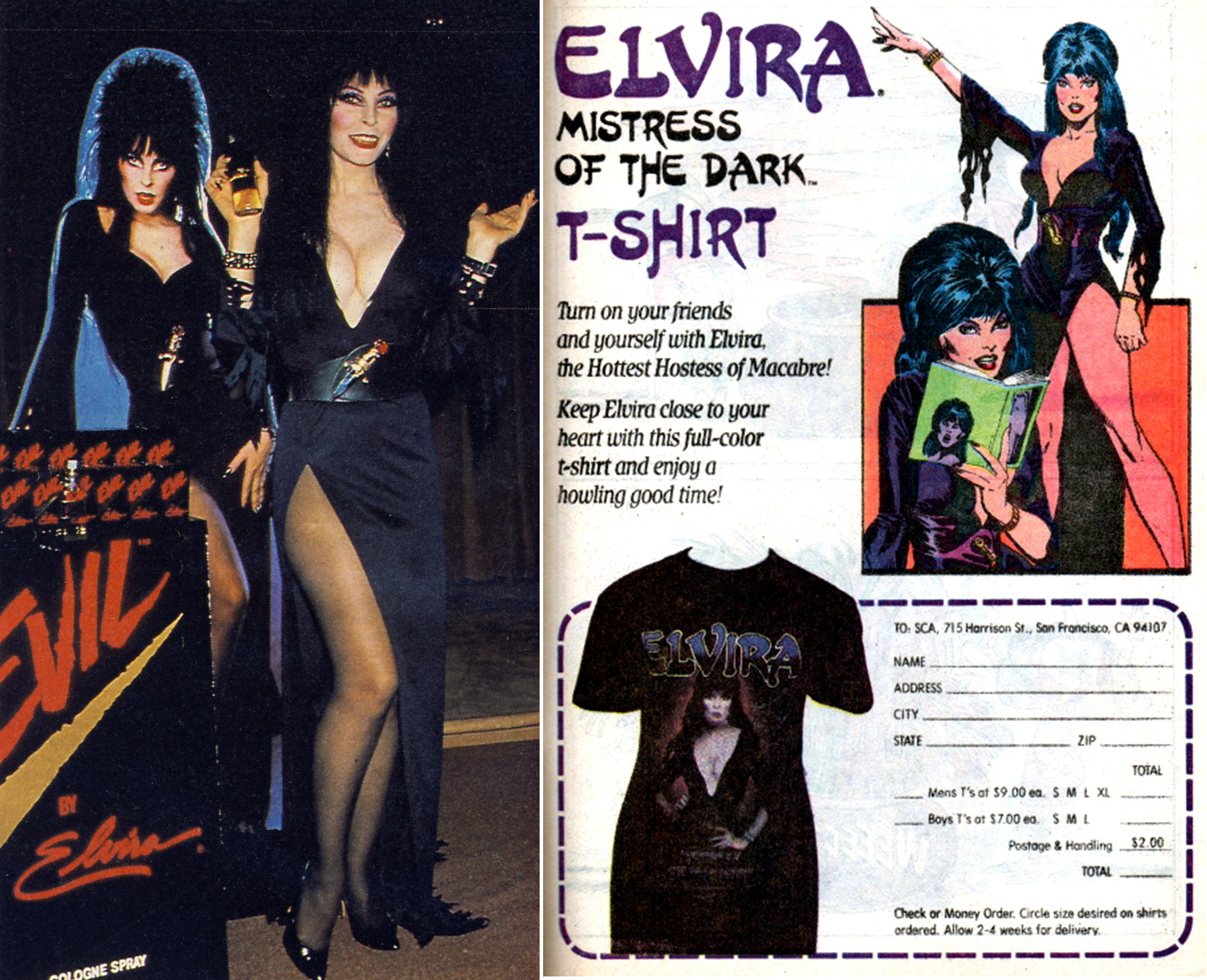
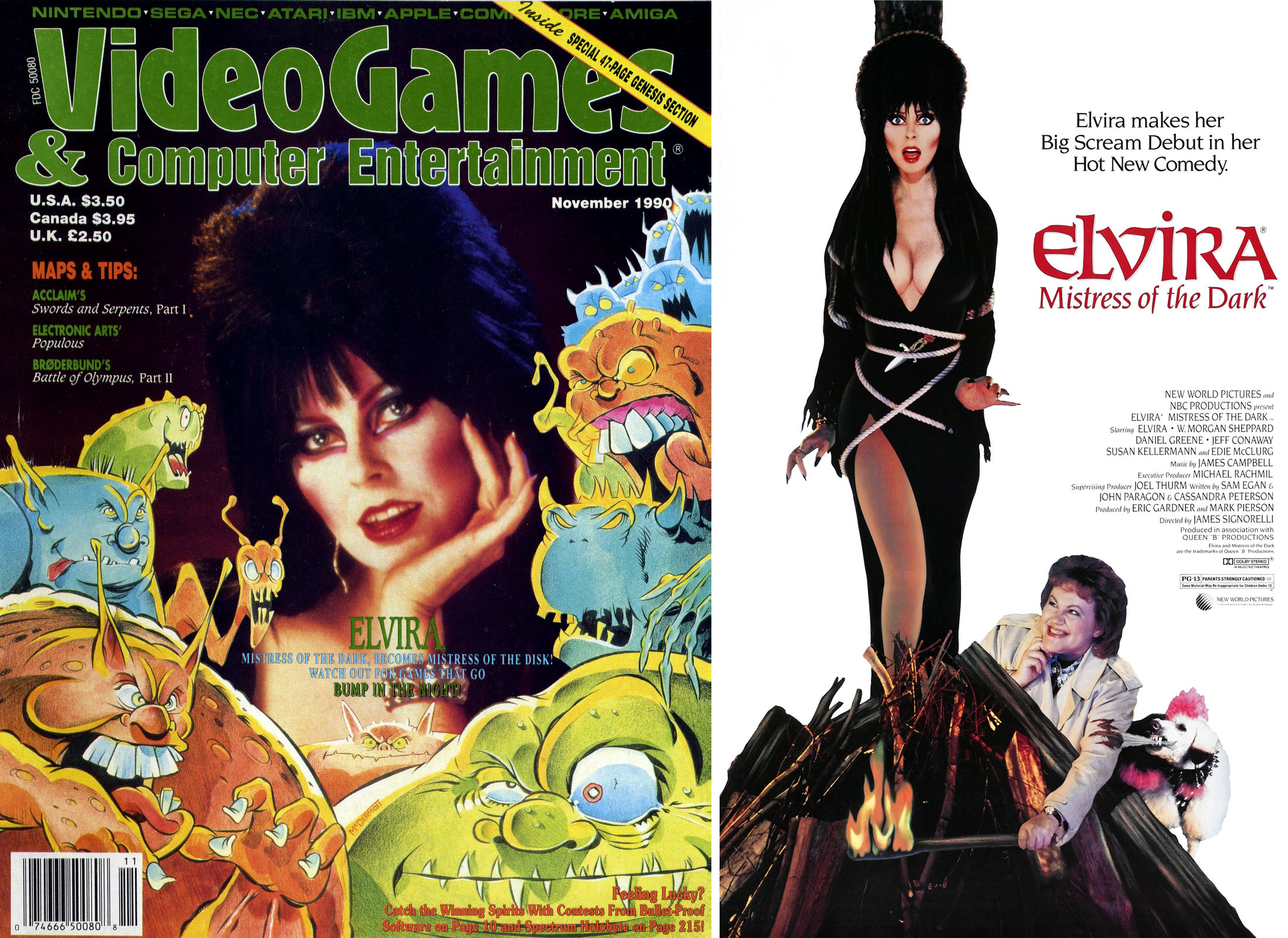
Beyond books and movies, Elvira merchandise has included two Accolade video games, a couple pinball machines, a porcelain model kit, straight to VHS movies, Halloween costumes, a Matchbox car, calendars, perfume, action figures, record albums, comic books, and even Halloween lights sold at Target and K-Mart.
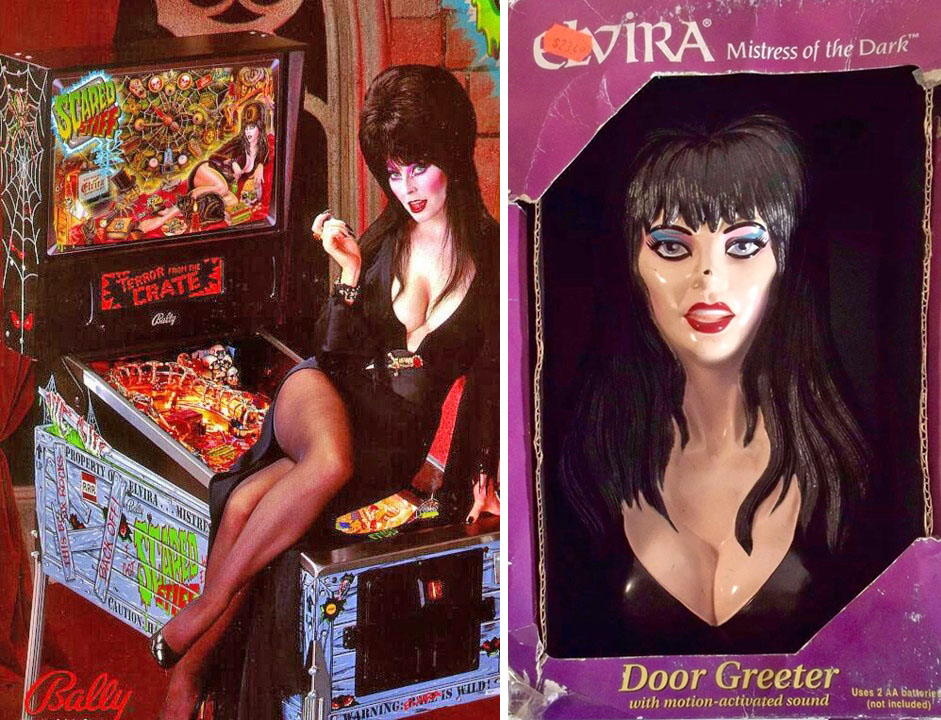
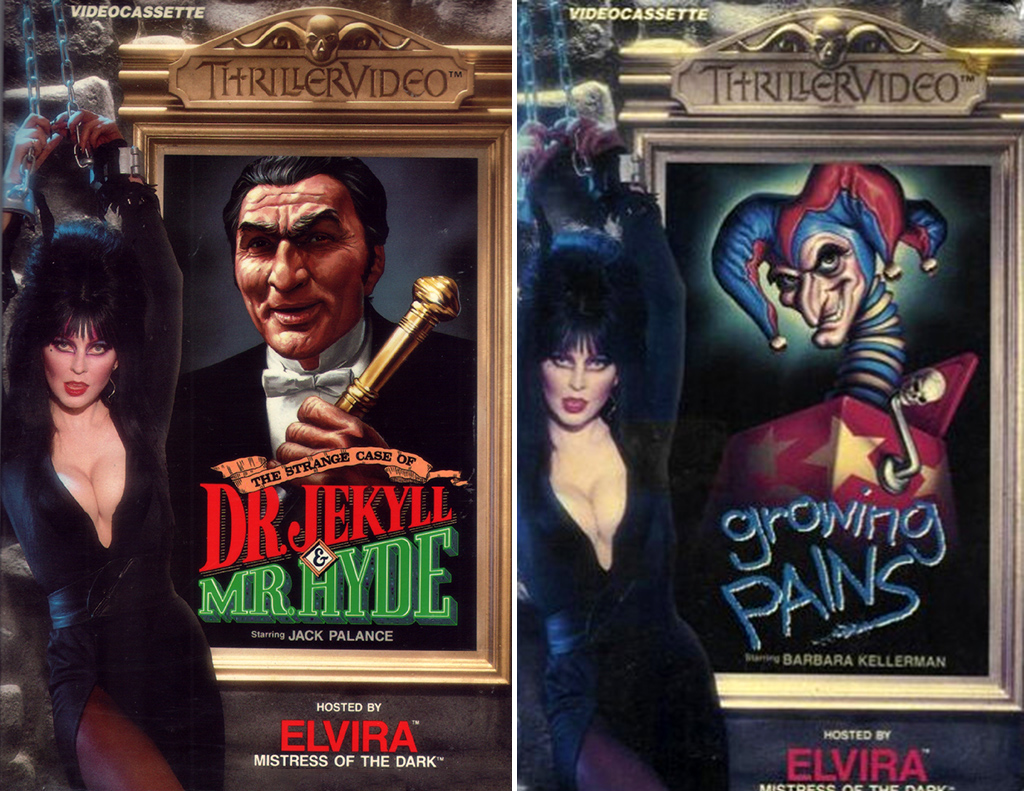
Elvira’s VHS series
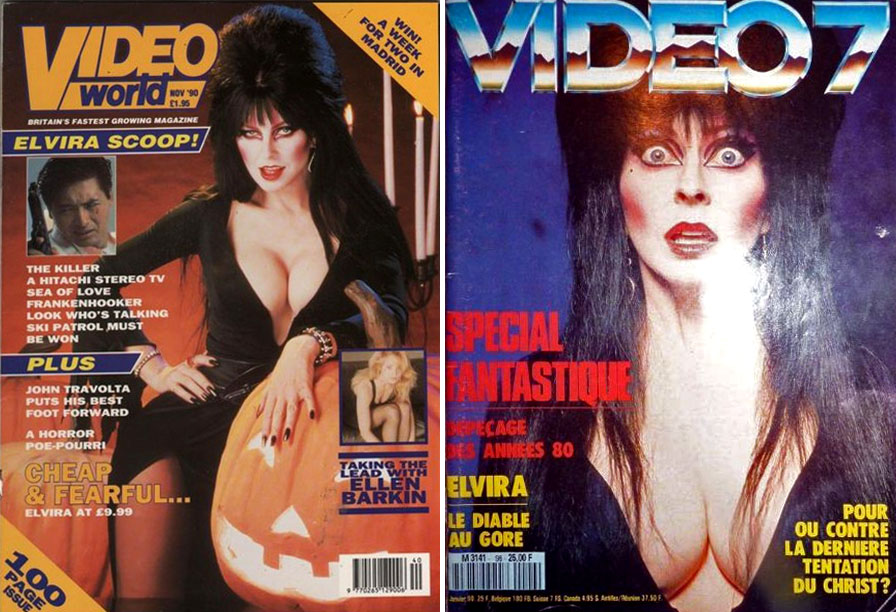
Move over Cindy Crawford, Elvira was the true magazine cover queen of the 1980s and 90s.
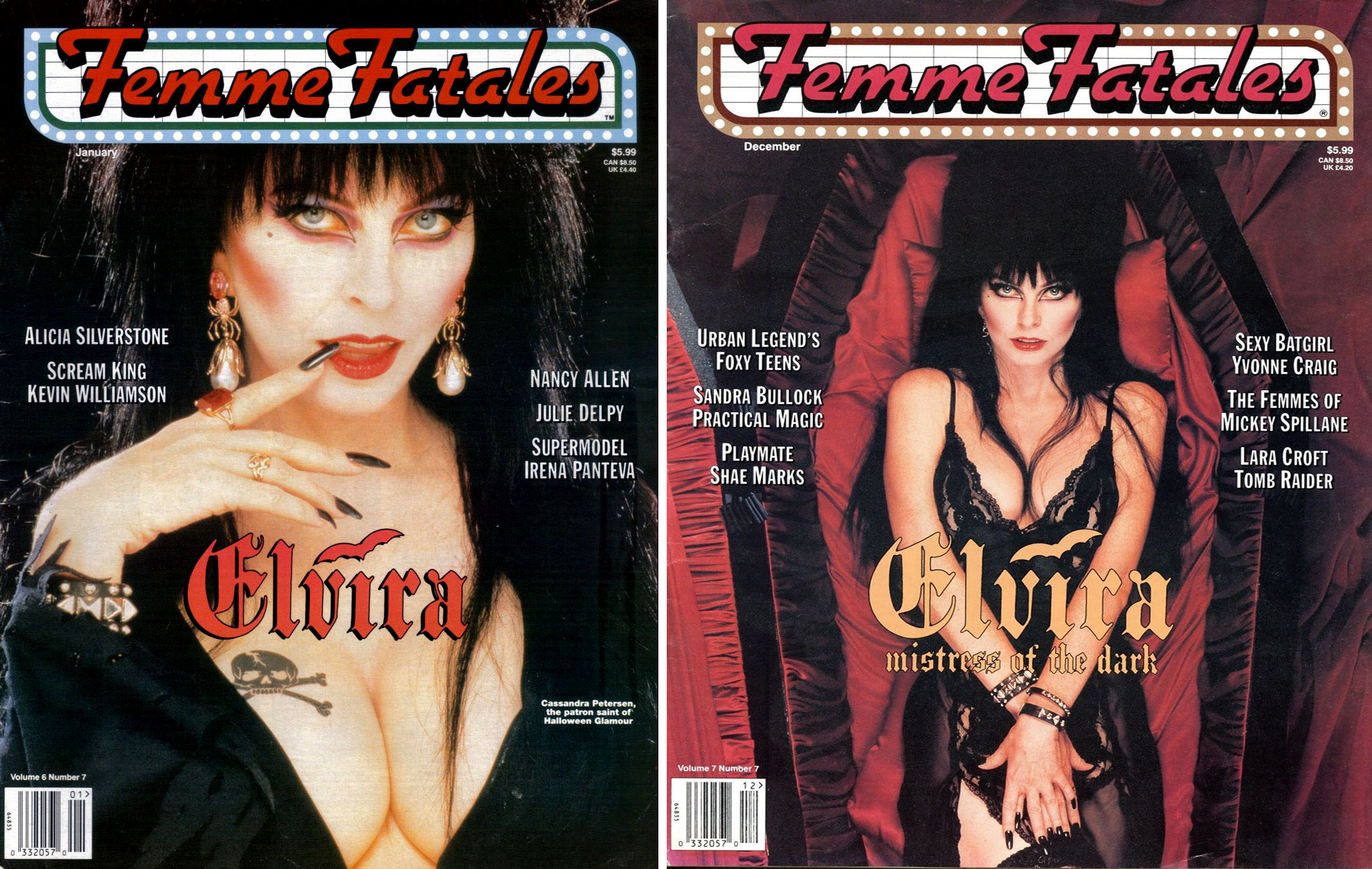
Fast forward a decade or so, and she’s still cranking out the Elvira productions. In 2014, she released a series for Hulu, and continues to appear at Comic Con type events.
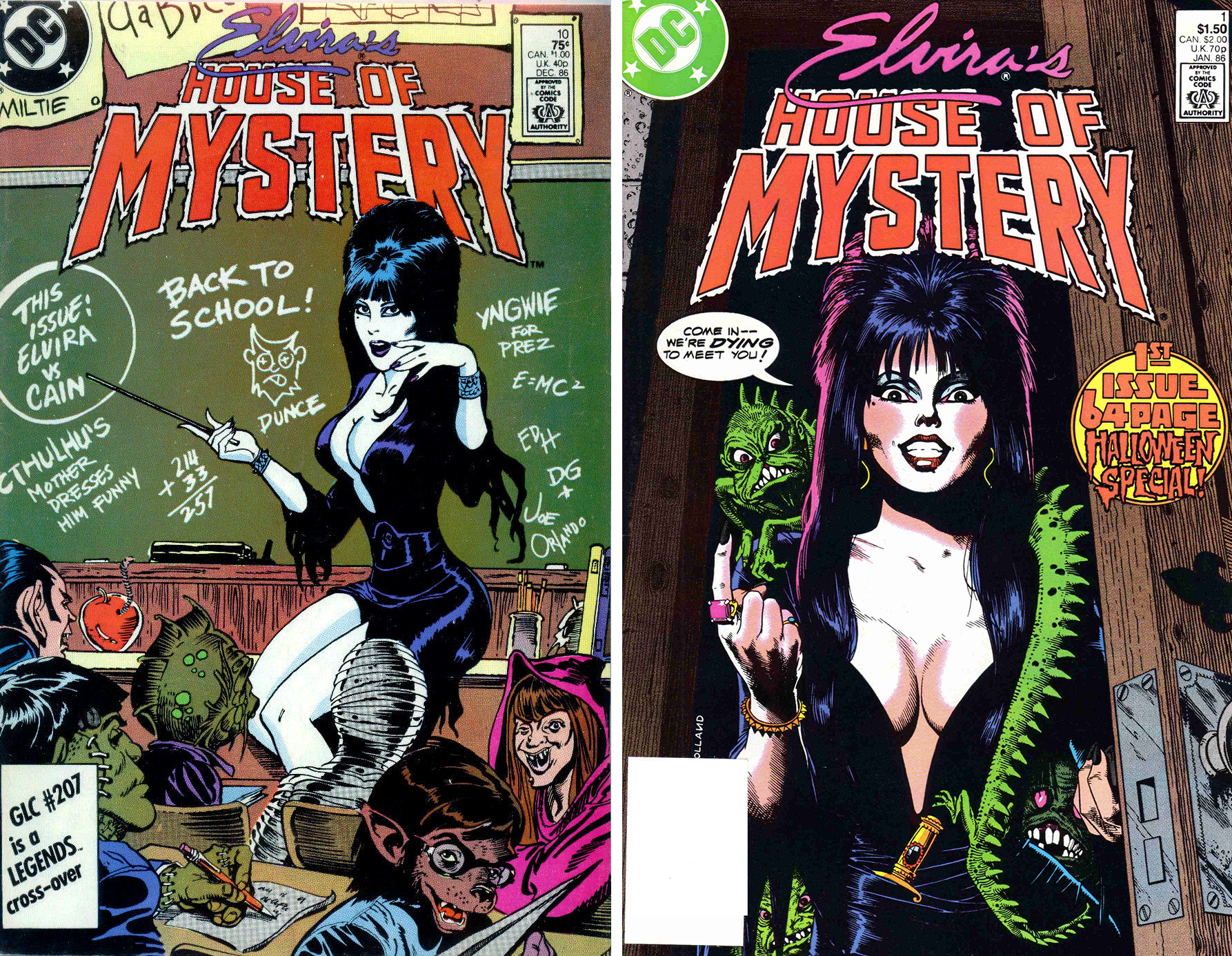
Elvira-Mania
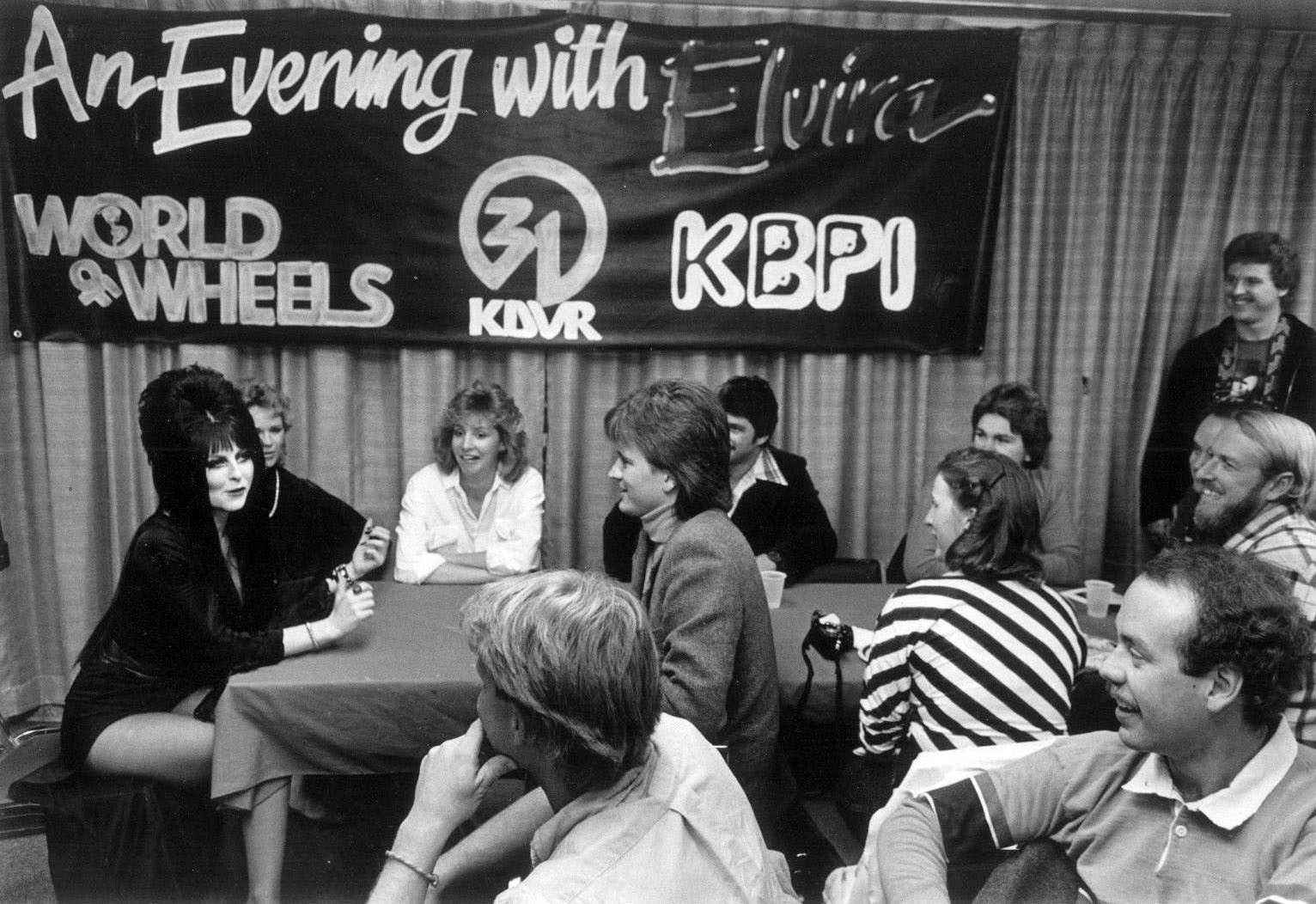
It’s amazing how quickly a small-time horror host gig could turn into a national sensation almost overnight. After nearly 16 years of struggling to make it, Cassandra Peterson had become a household name, horror icon, and Halloween institution.
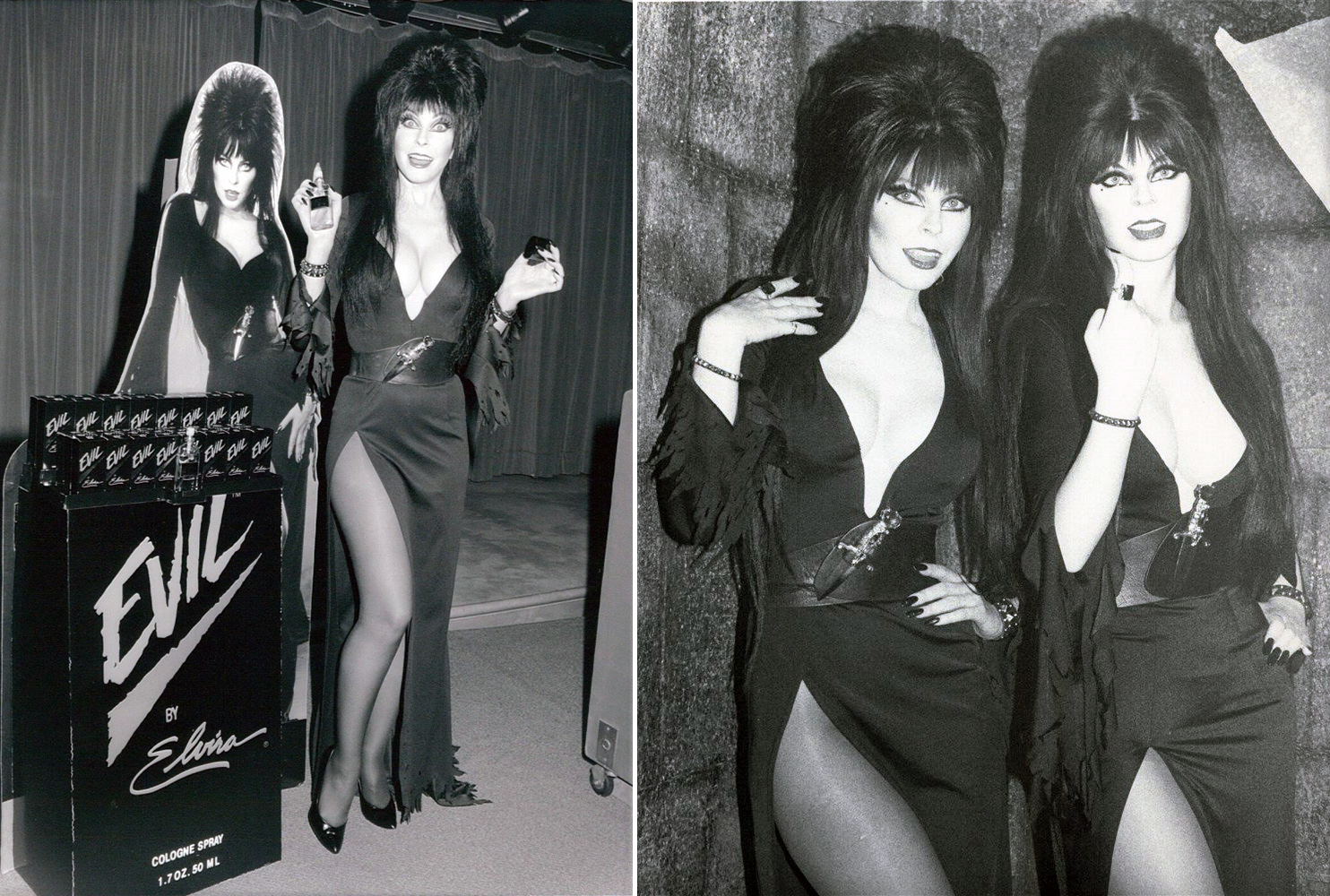
Elvira’s perfume brand “Evil” and her likeness at the wax museum
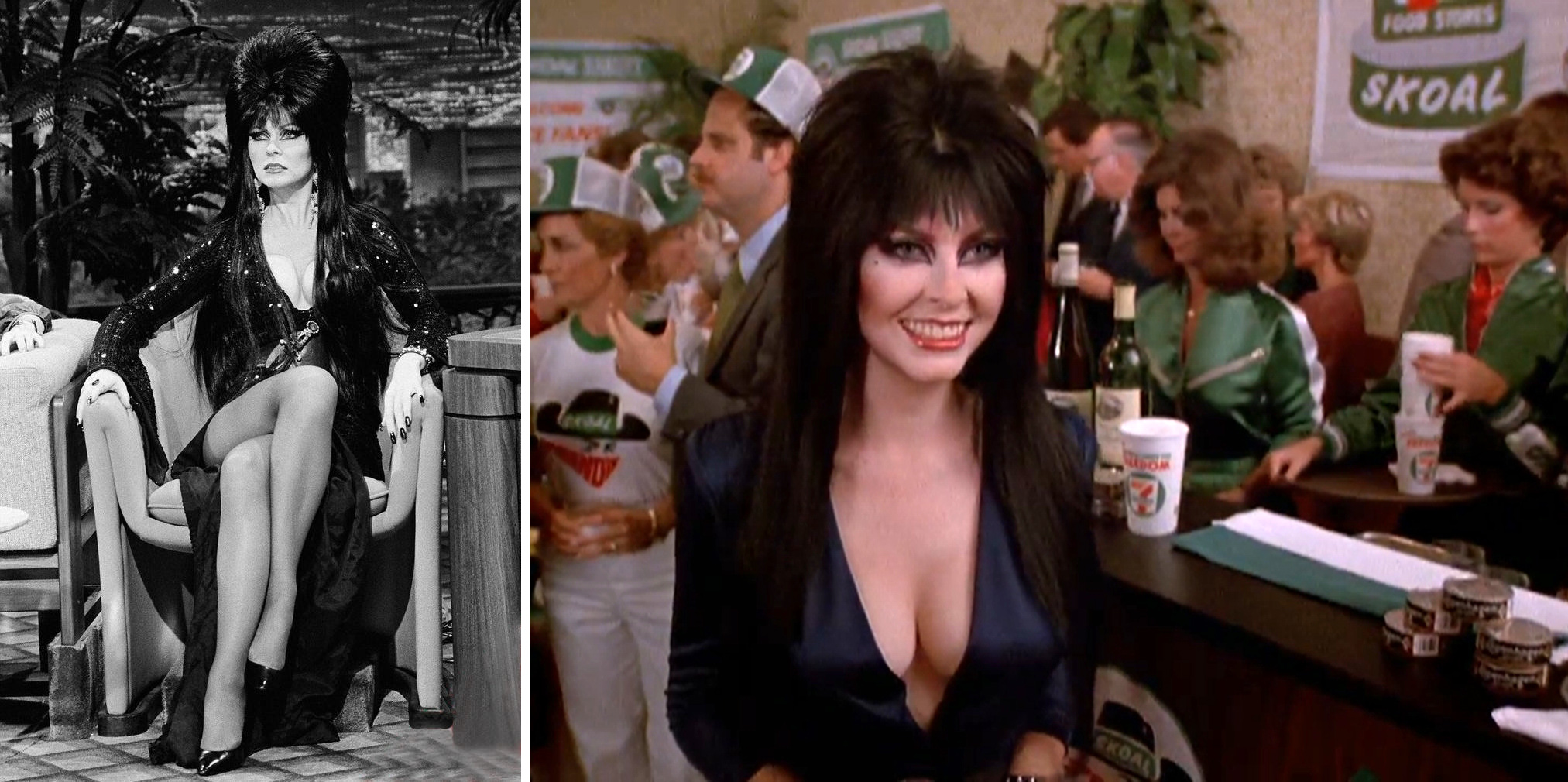
Elvira on The Tonight Show (L) and Stroker Ace (R)
As Elvira’s popularity grew and grew, so did the demands of appearing at publicity events. And this meant lots of photo-ops with famous people. Magazines and newspapers of the 80s and 90s were chock full of Elvira photos hamming it up with other celebs – usually in the October issues.
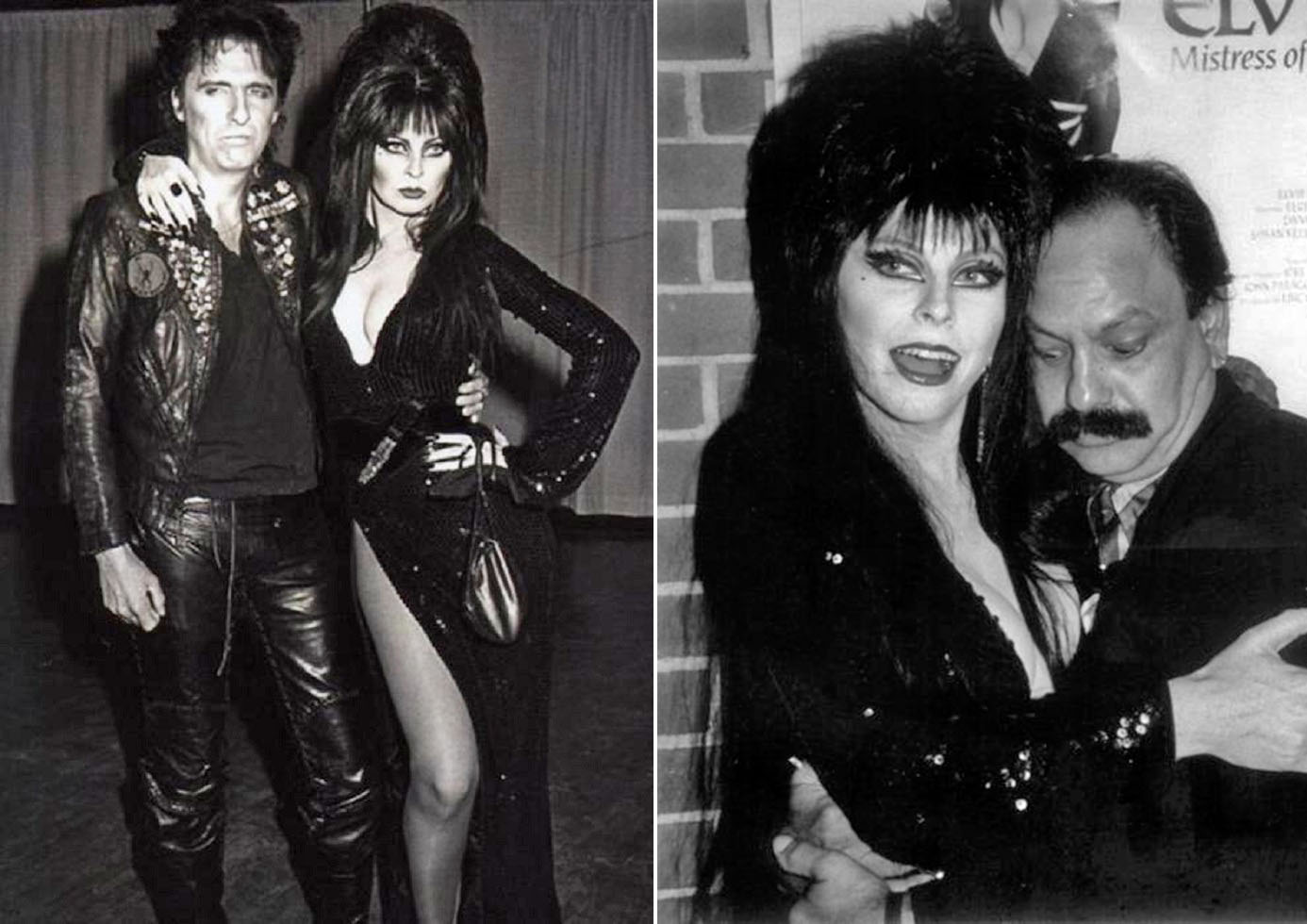
Elvira and Alice Cooper (L) and Cheech Marin (R)
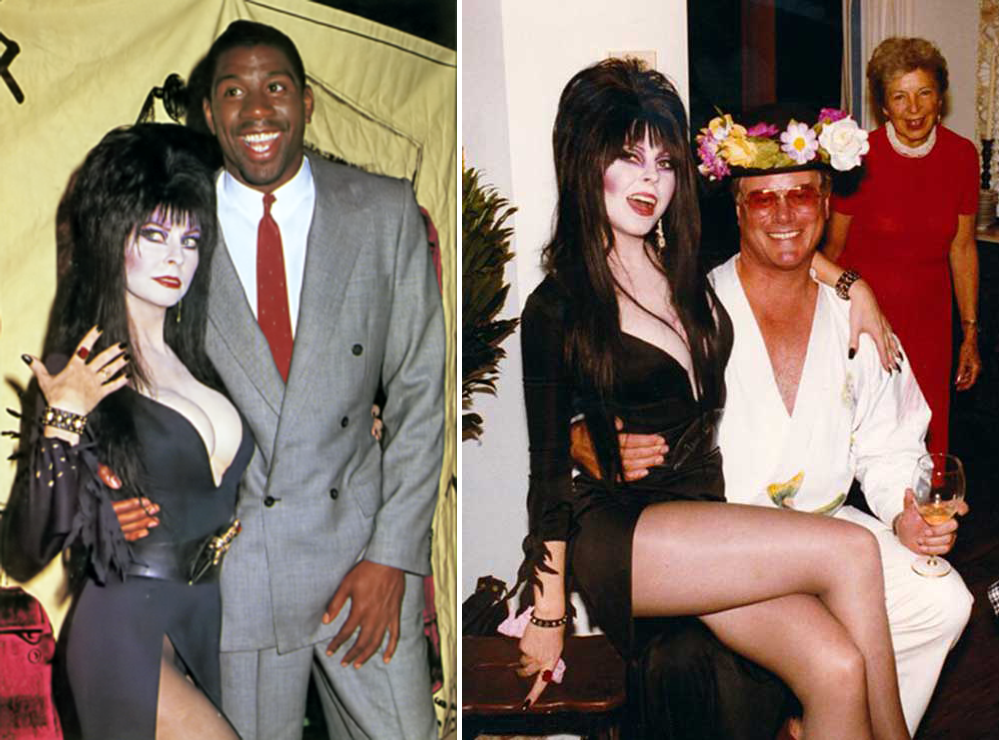
Elvira and Magic Johnson (L) and Larry Hagman (R)
So, what is to become of Elvira in the years ahead? According to Cassandra Peterson, “I hope and think there is the possibility that I can eventually retire from the live performances. It’s like the case of Superman; nobody goes around and does a live performance of him, but you can still merchandise the character….. The day I start looking pathetic in the outfit, thin it is time to hang it up.” (Femme Fatales, Vol. 5, No.7)
Would you like to support Flashbak?
Please consider making a donation to our site. We don't want to rely on ads to bring you the best of visual culture. You can also support us by signing up to our Mailing List. And you can also follow us on Facebook, Instagram and Twitter. For great art and culture delivered to your door, visit our shop.



